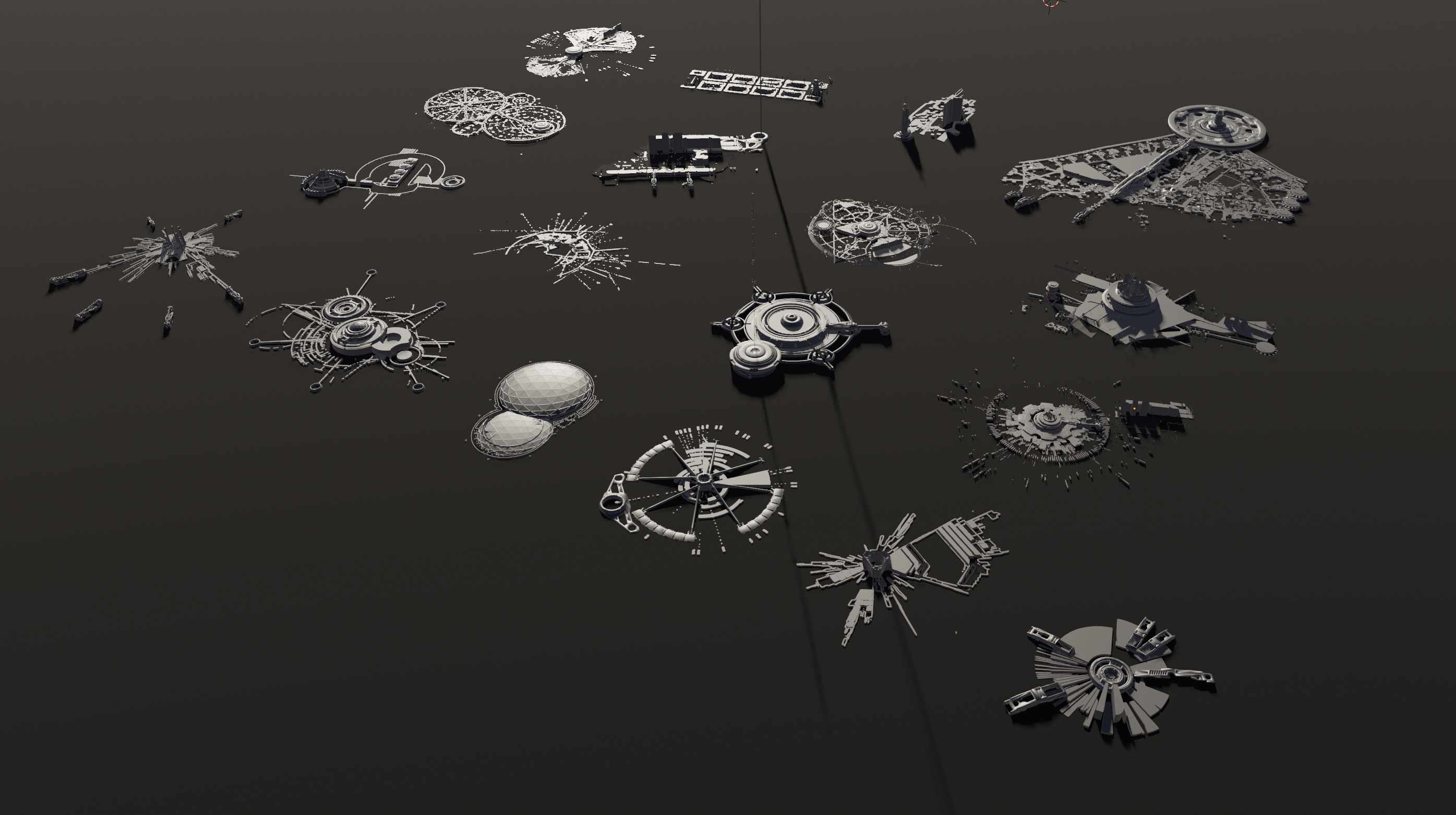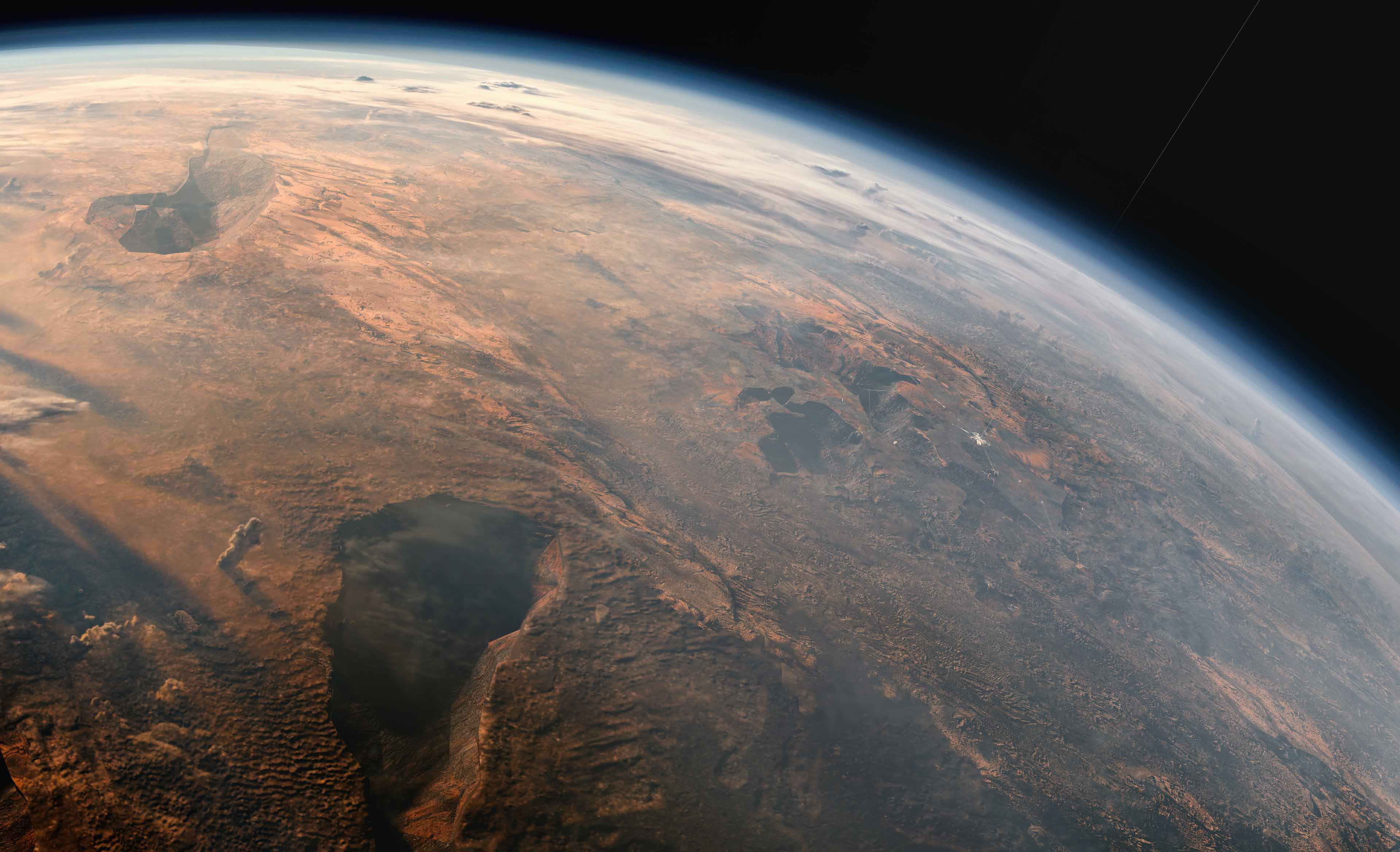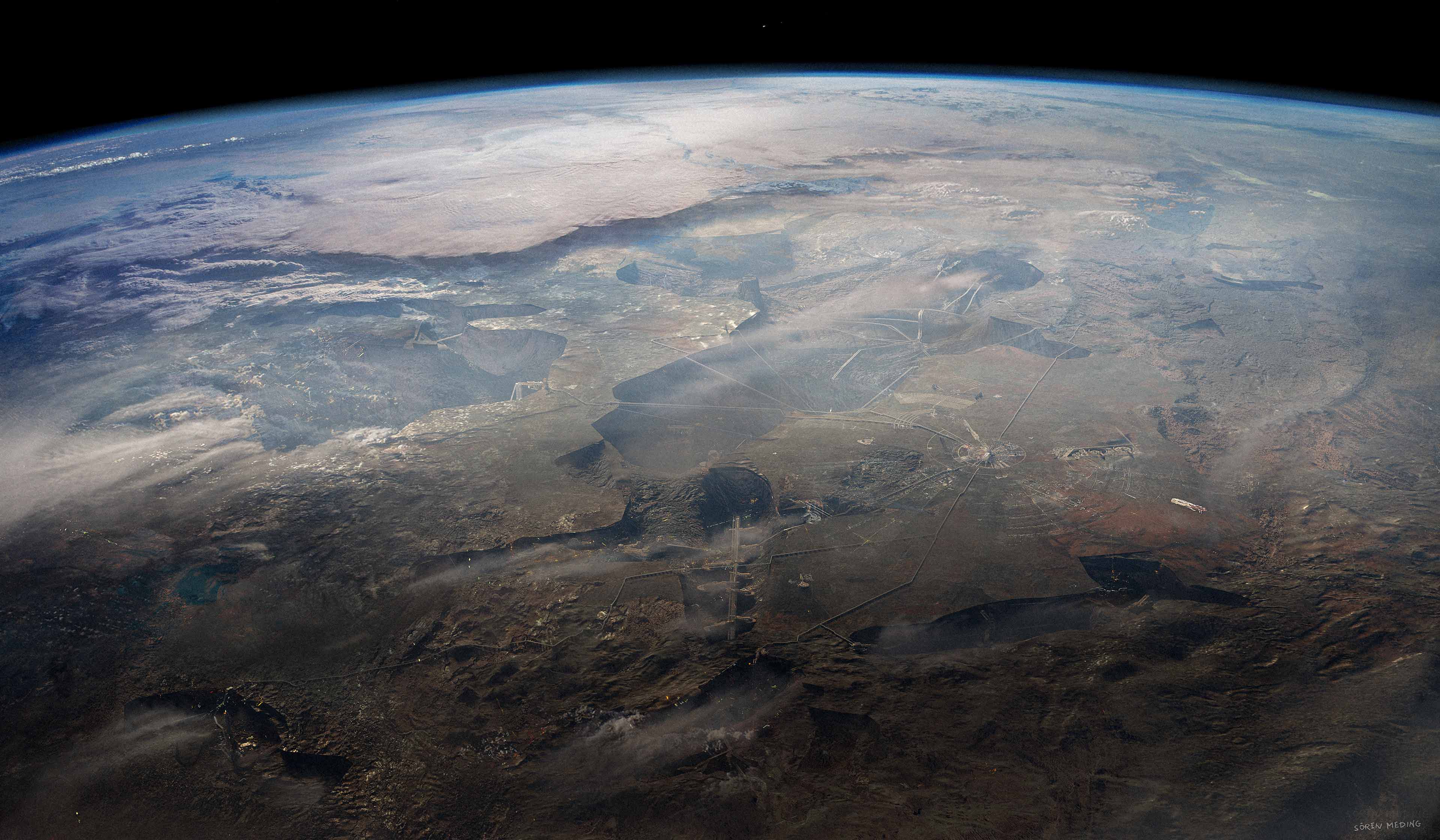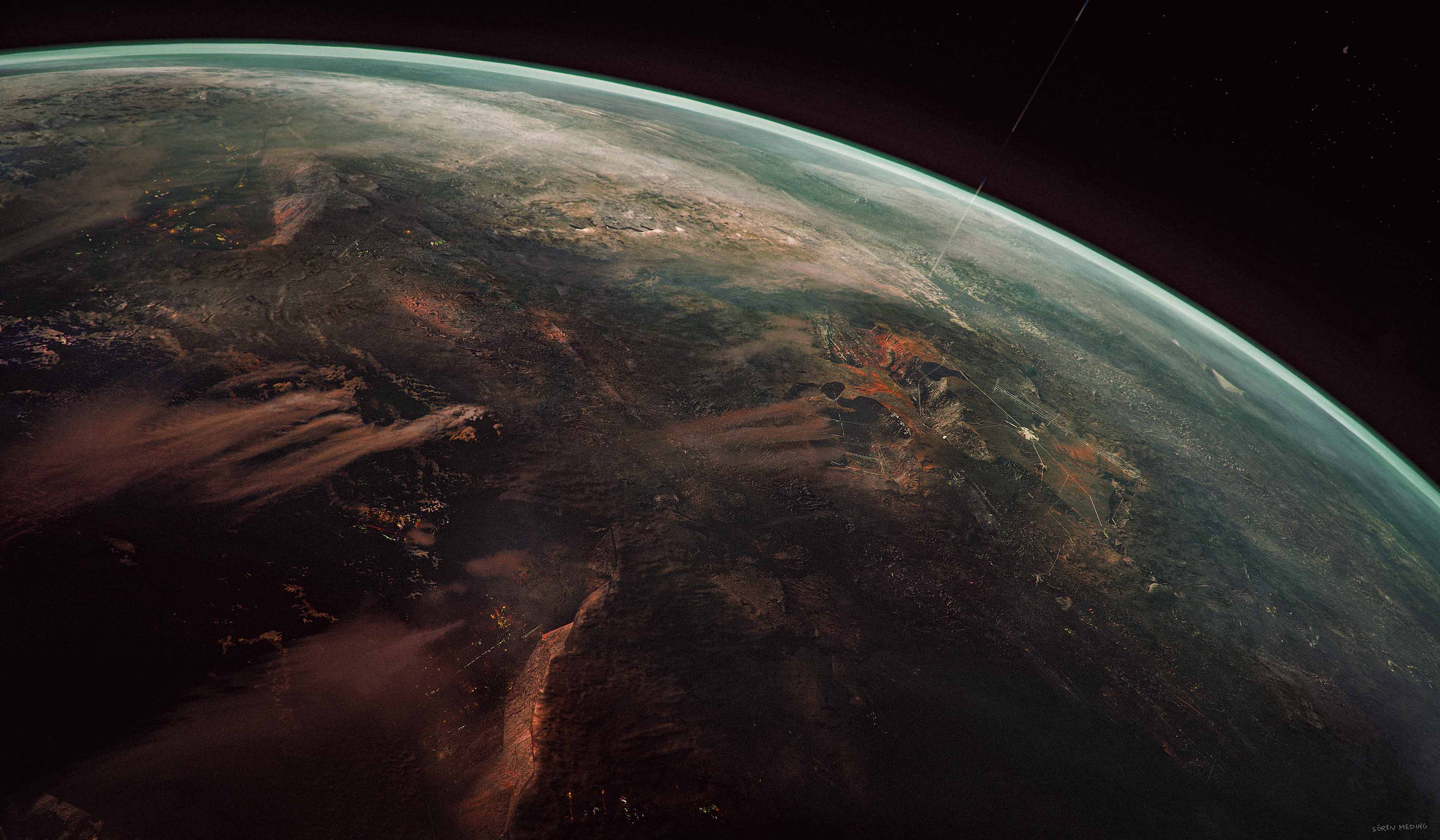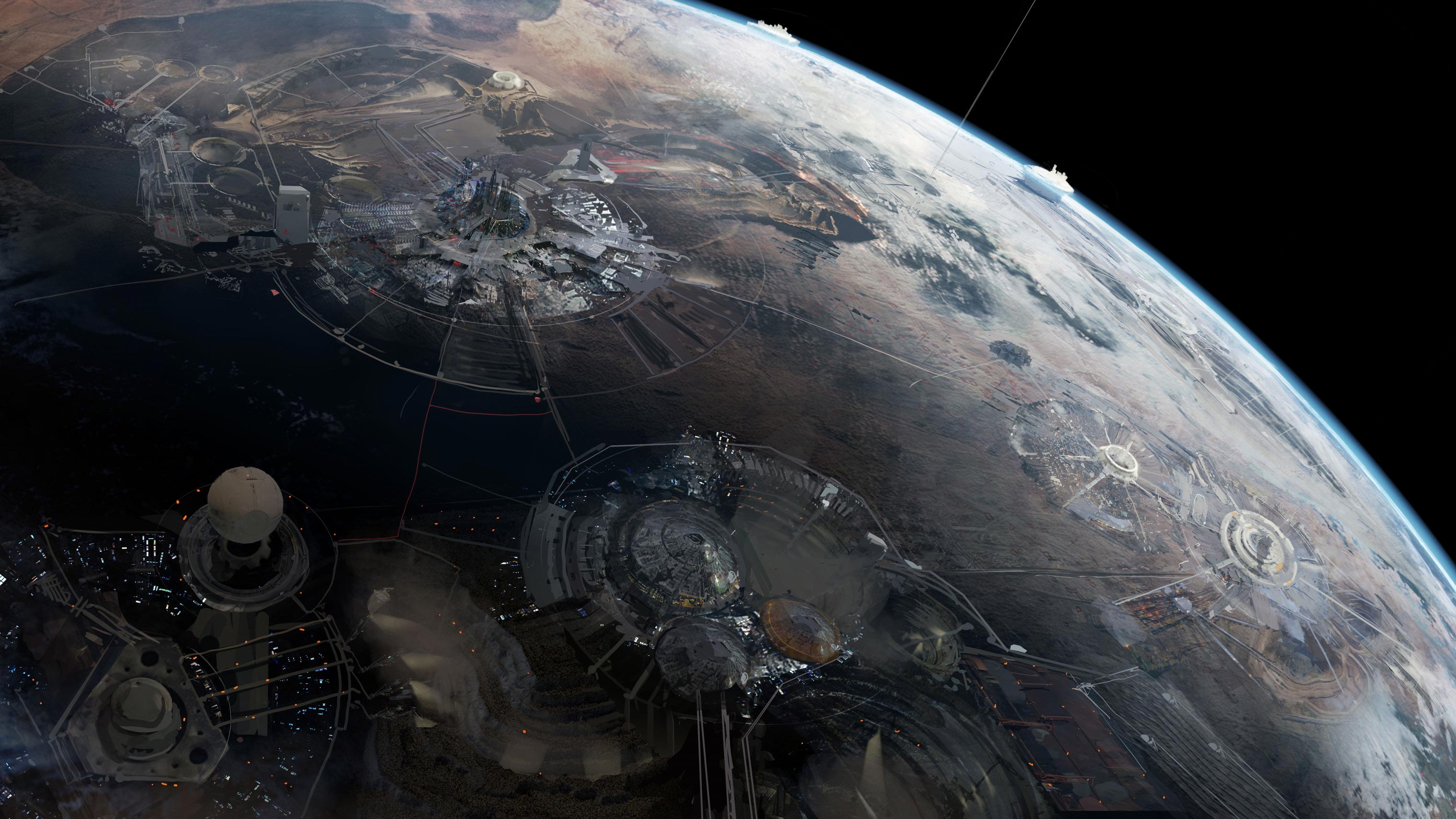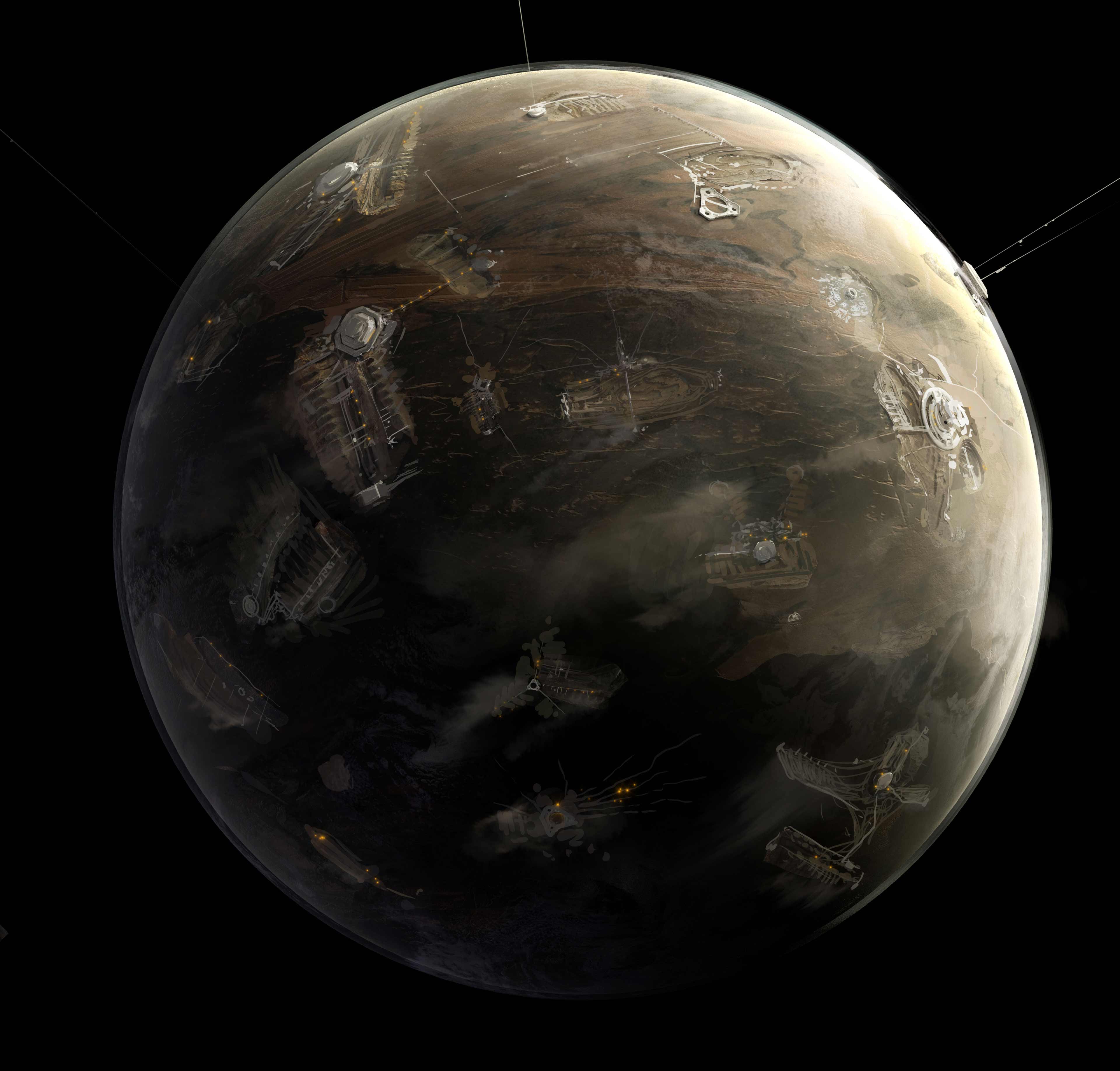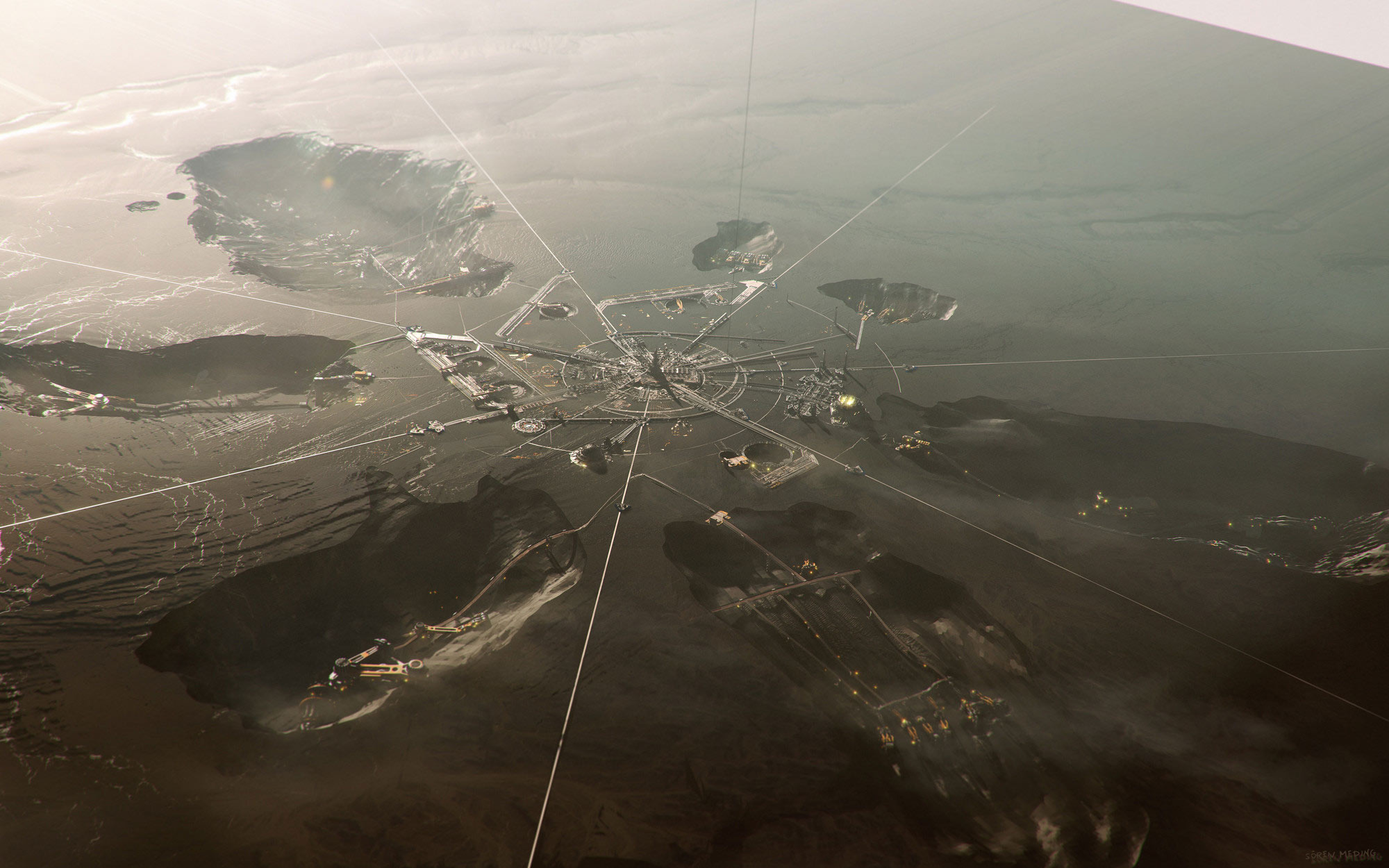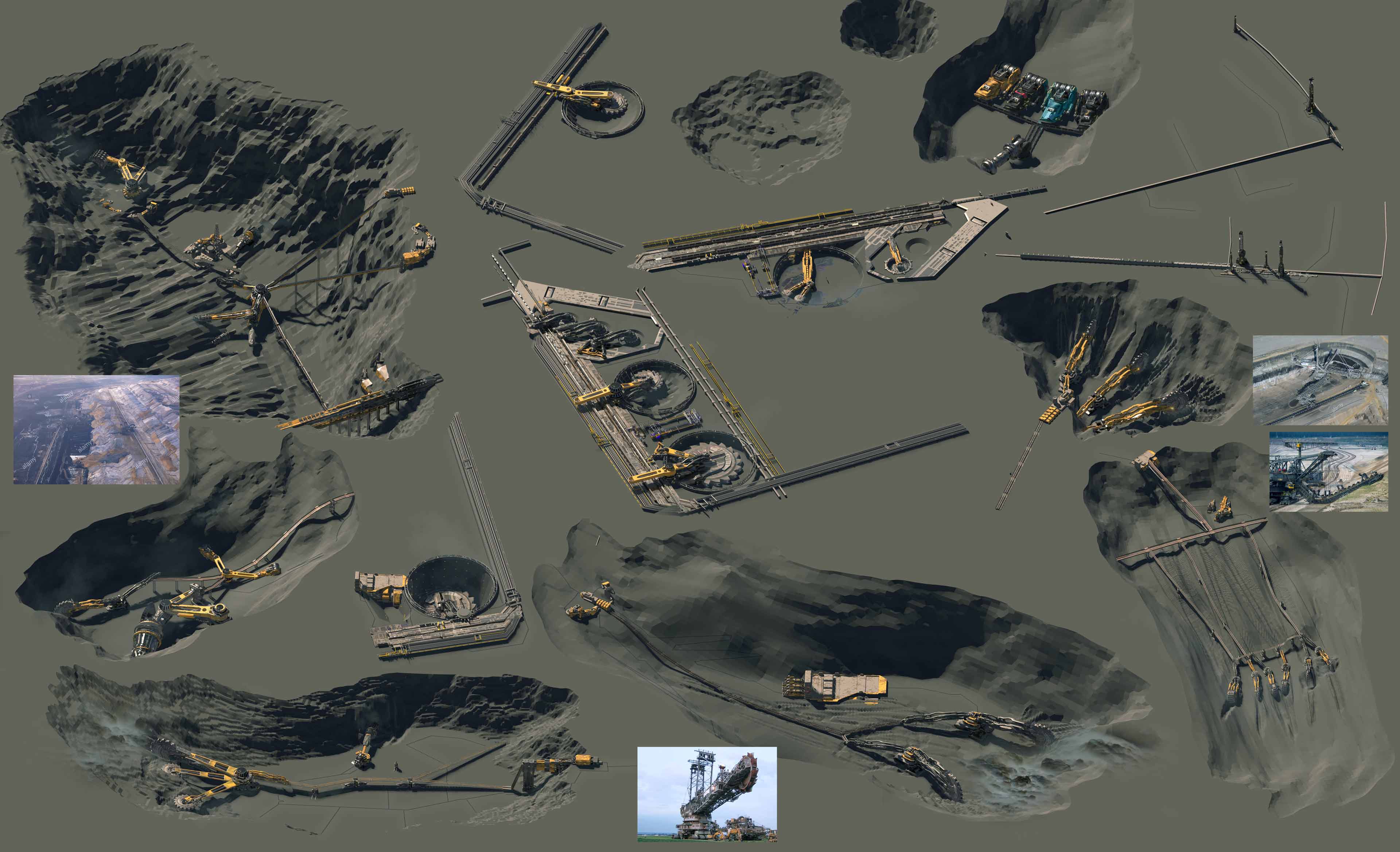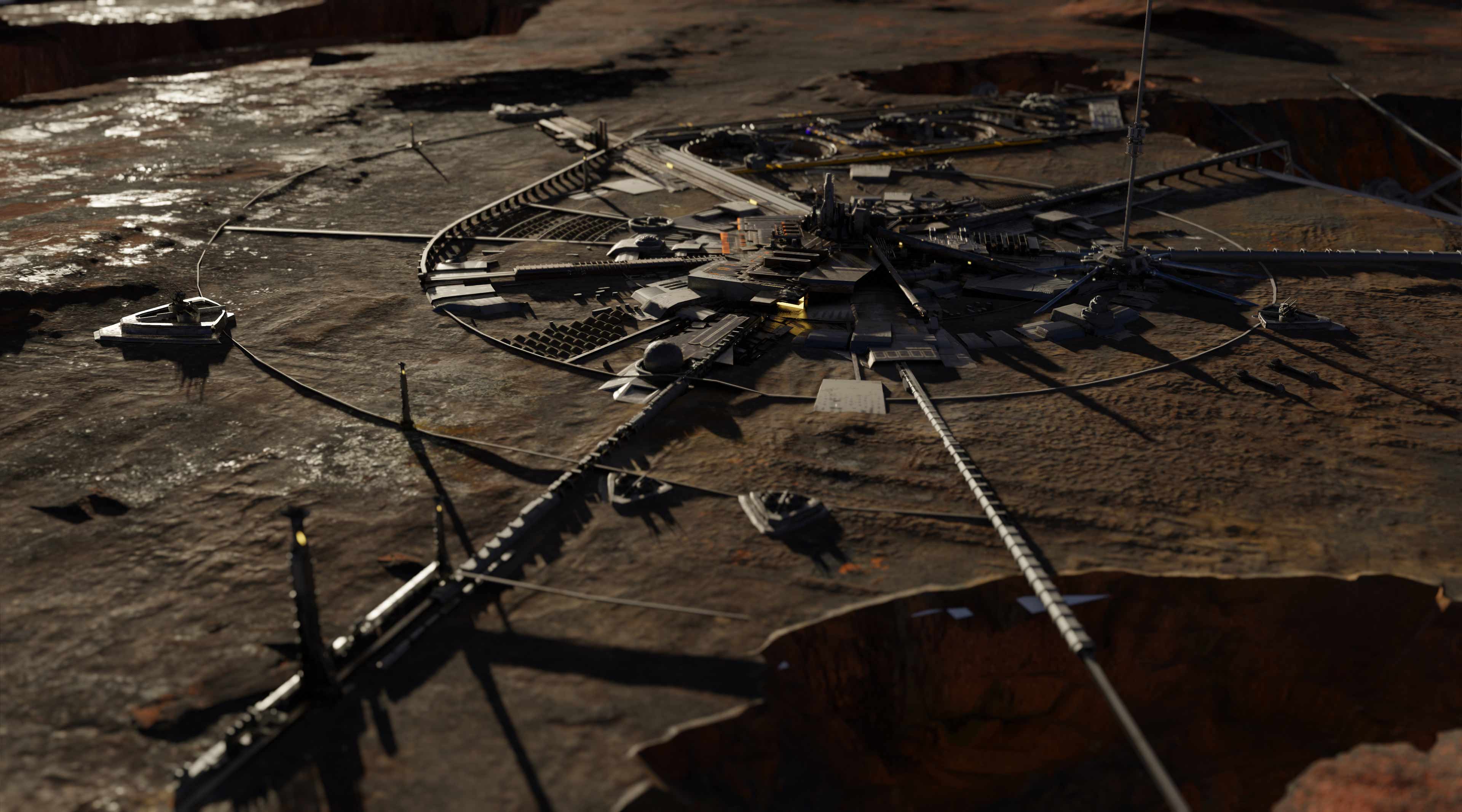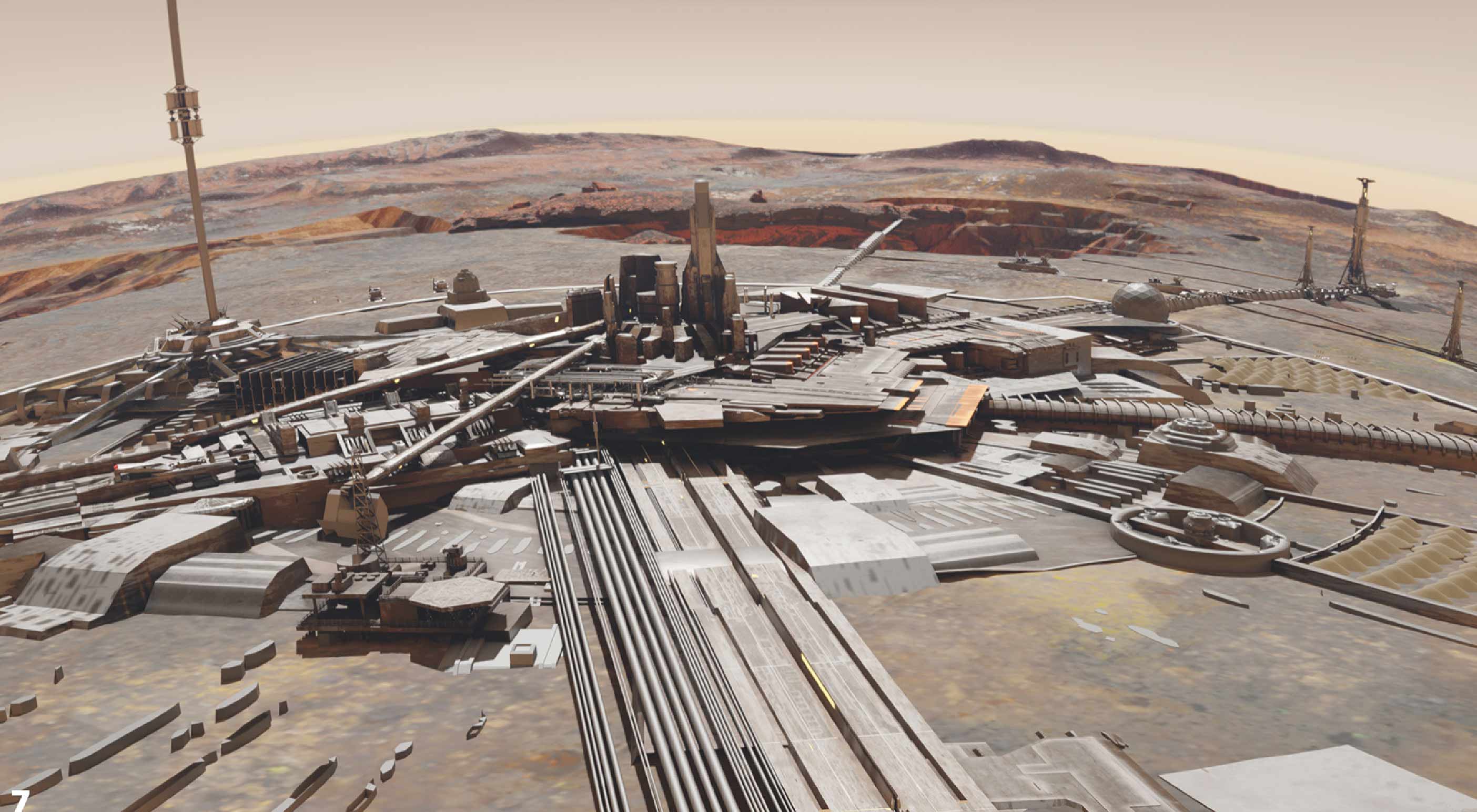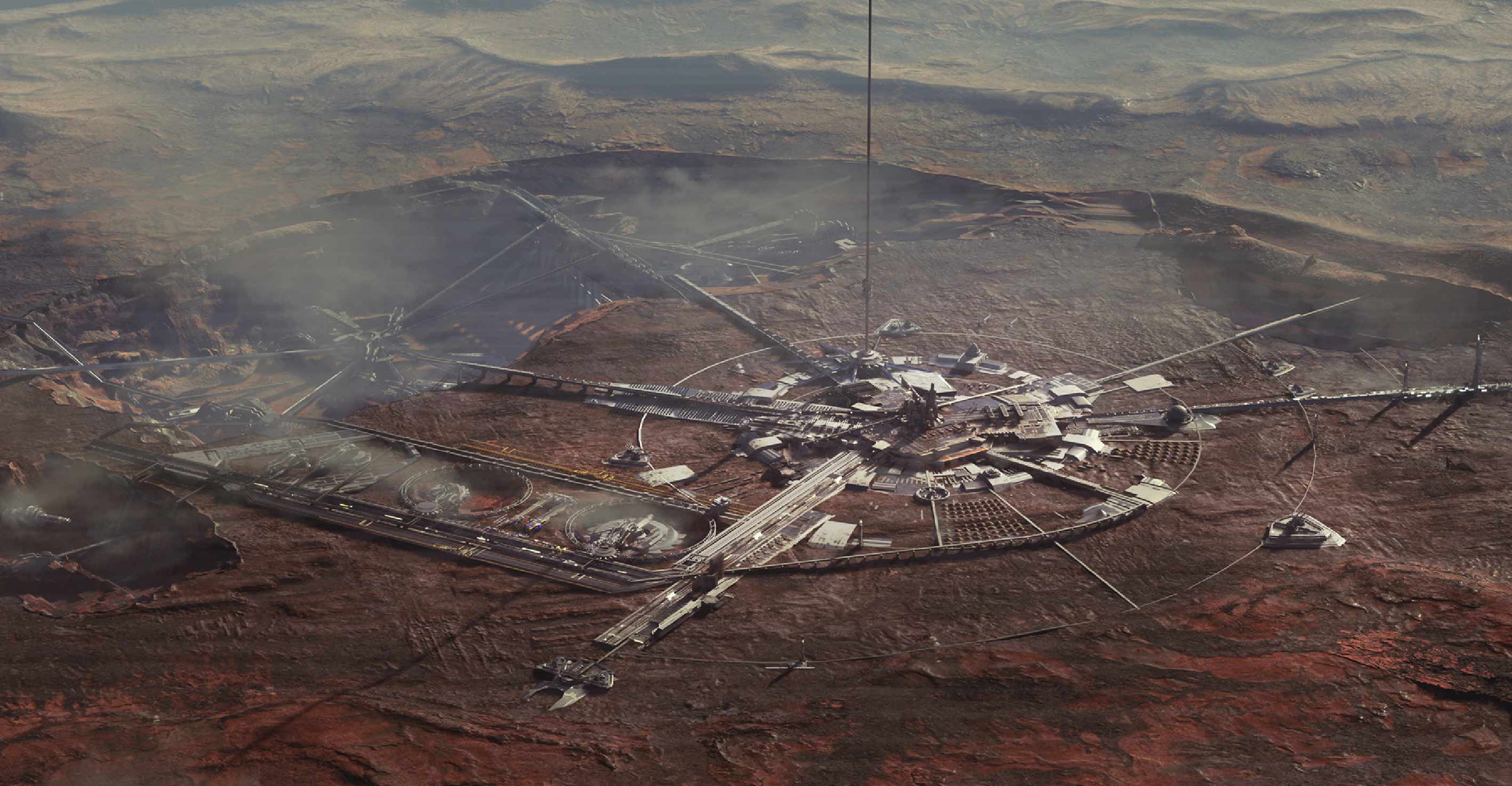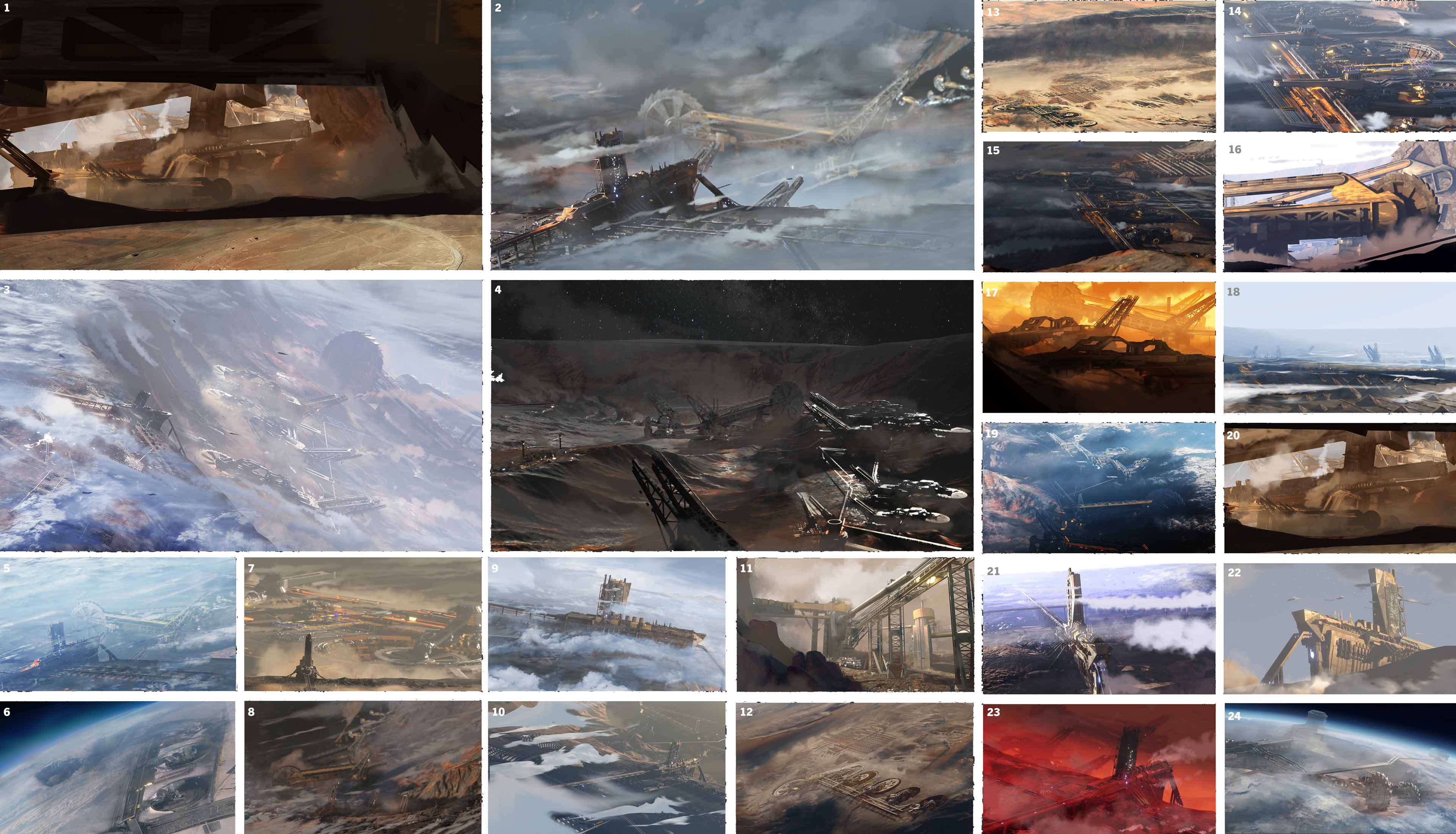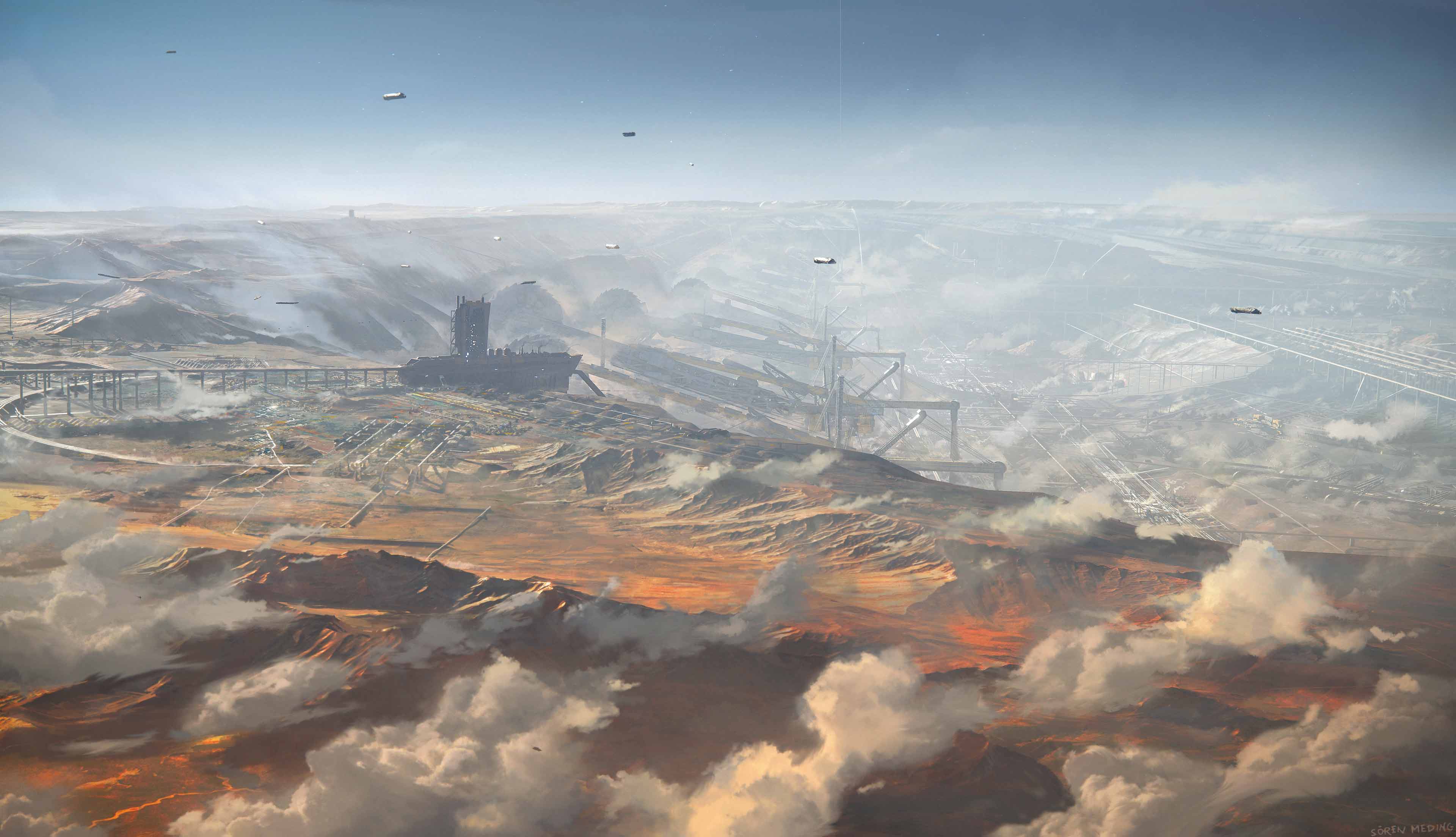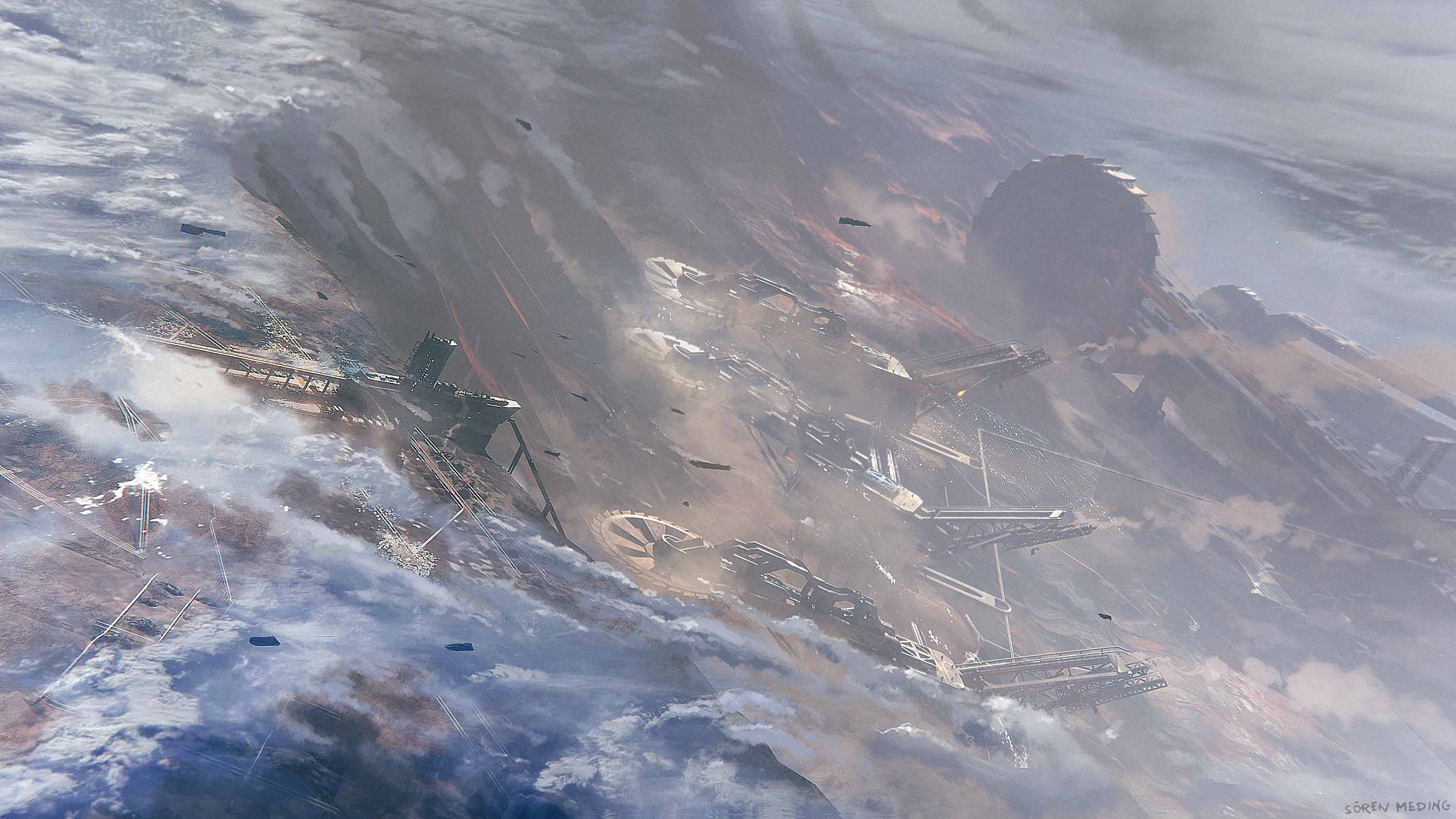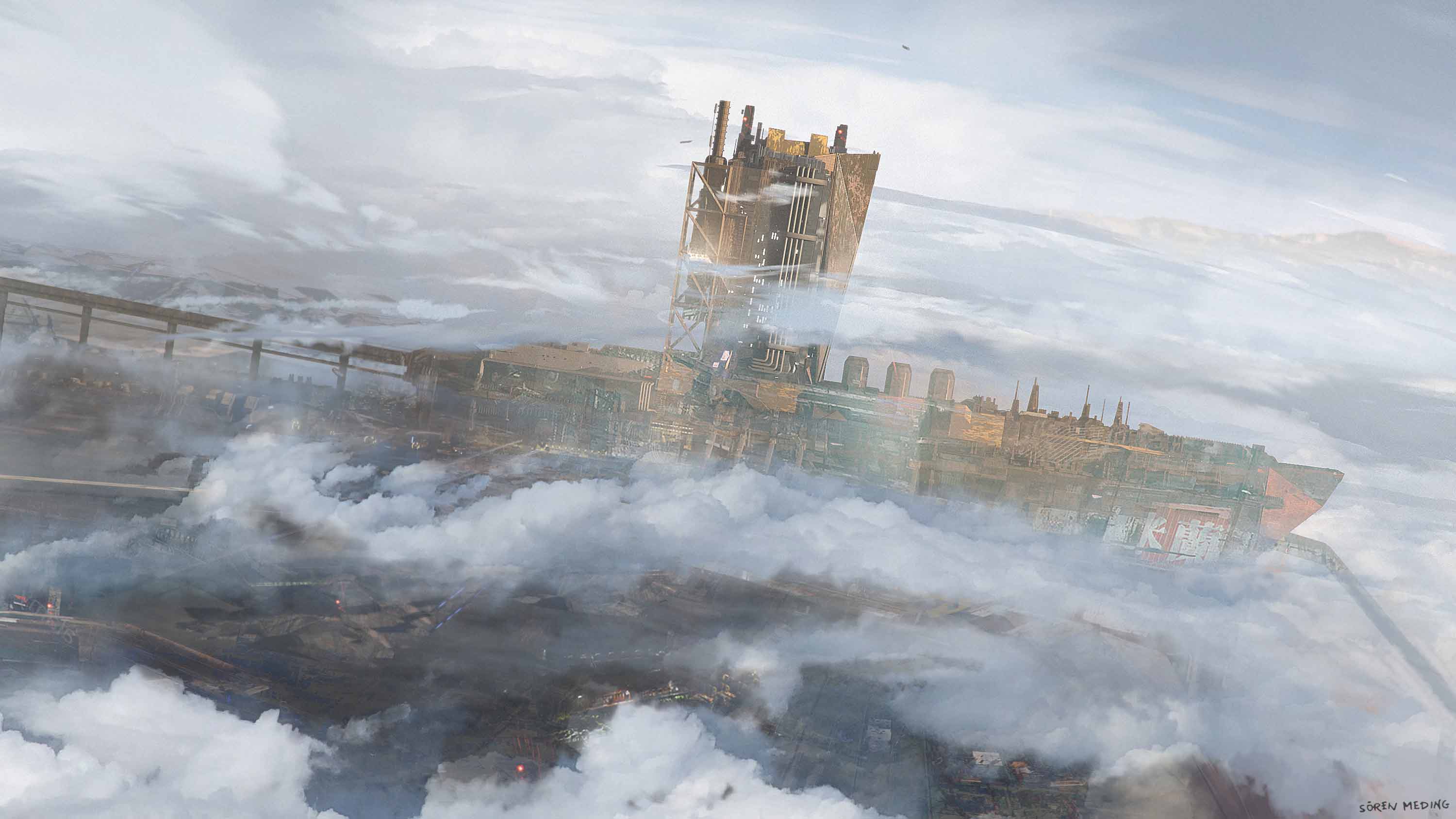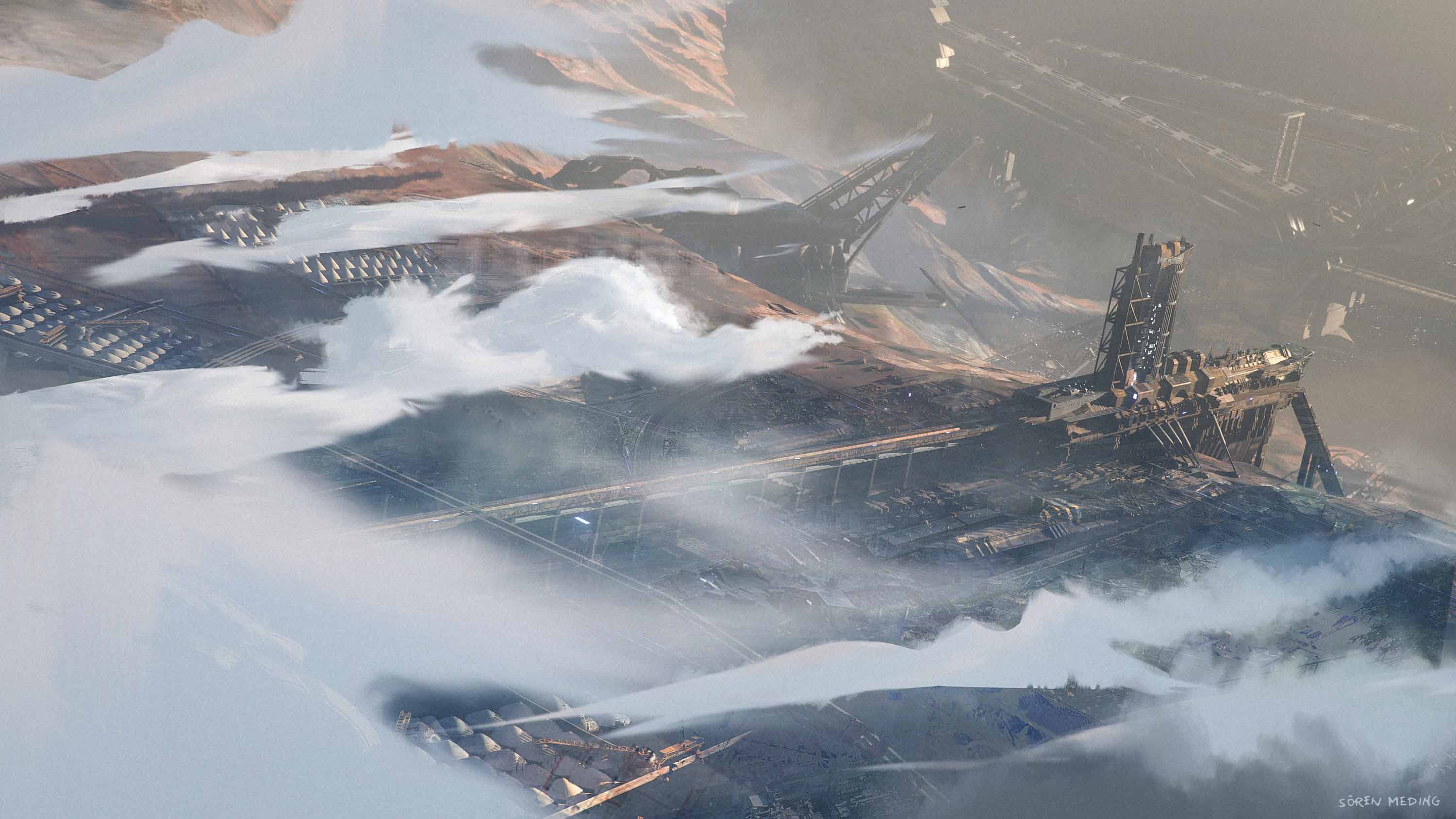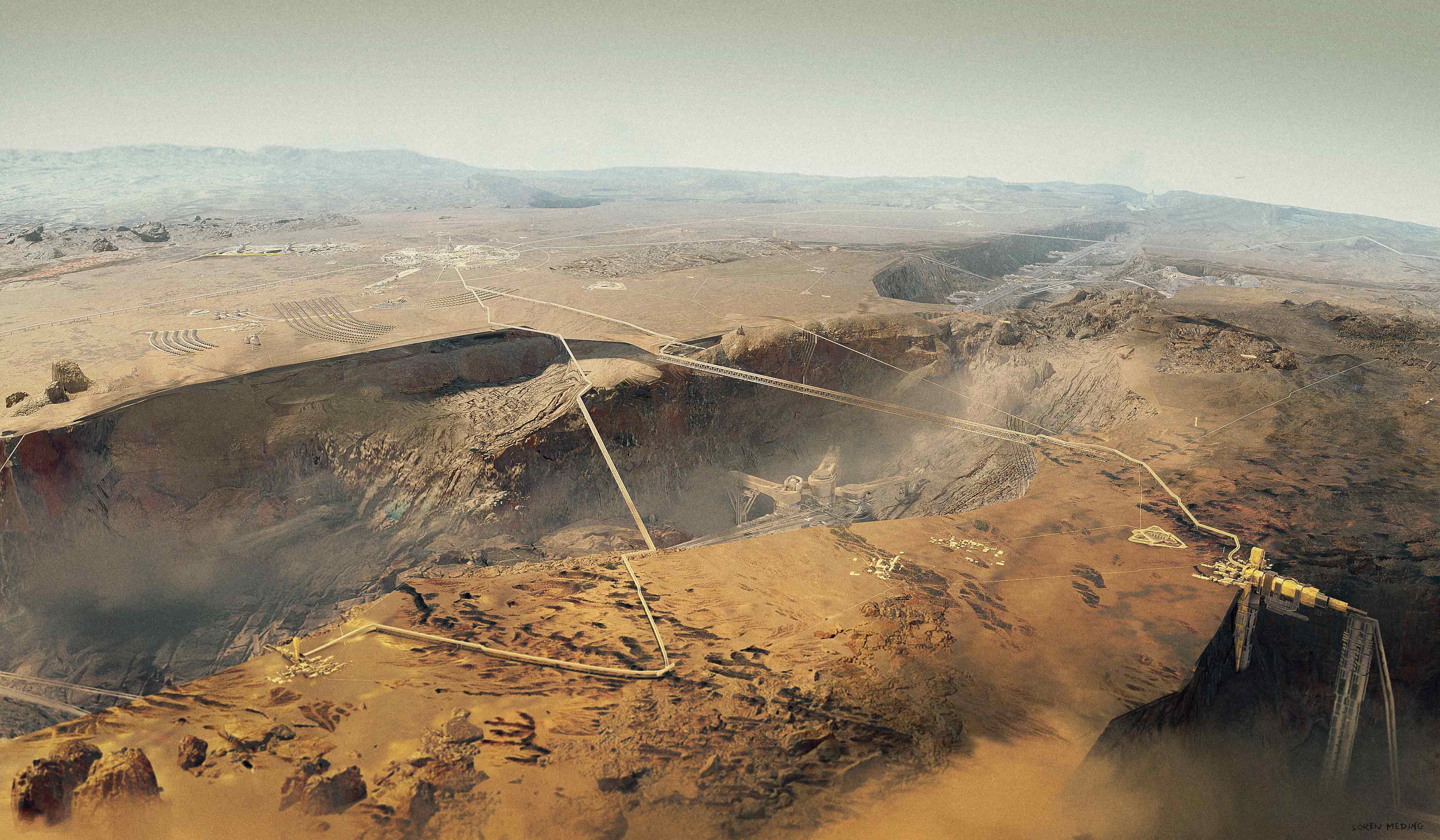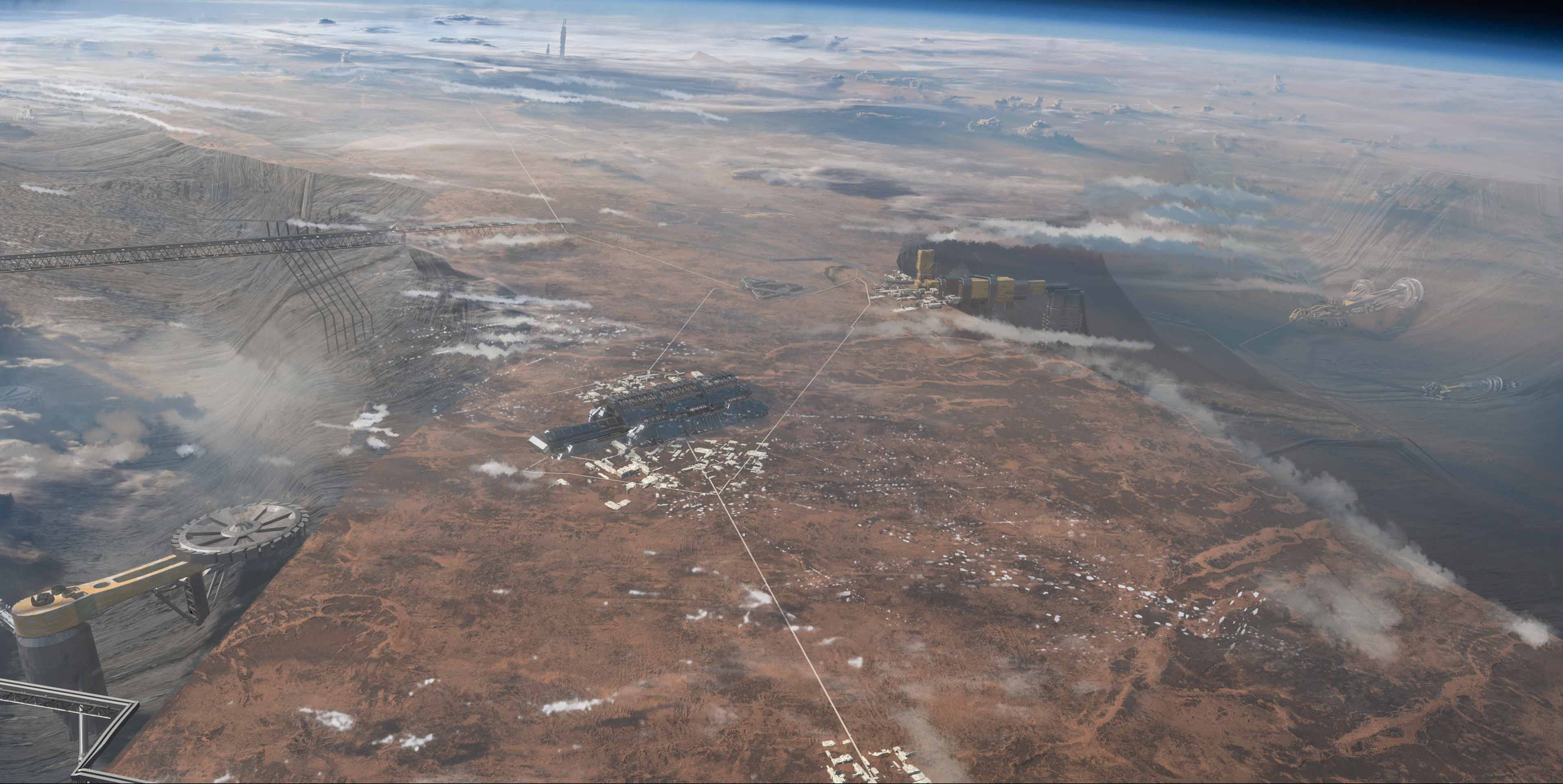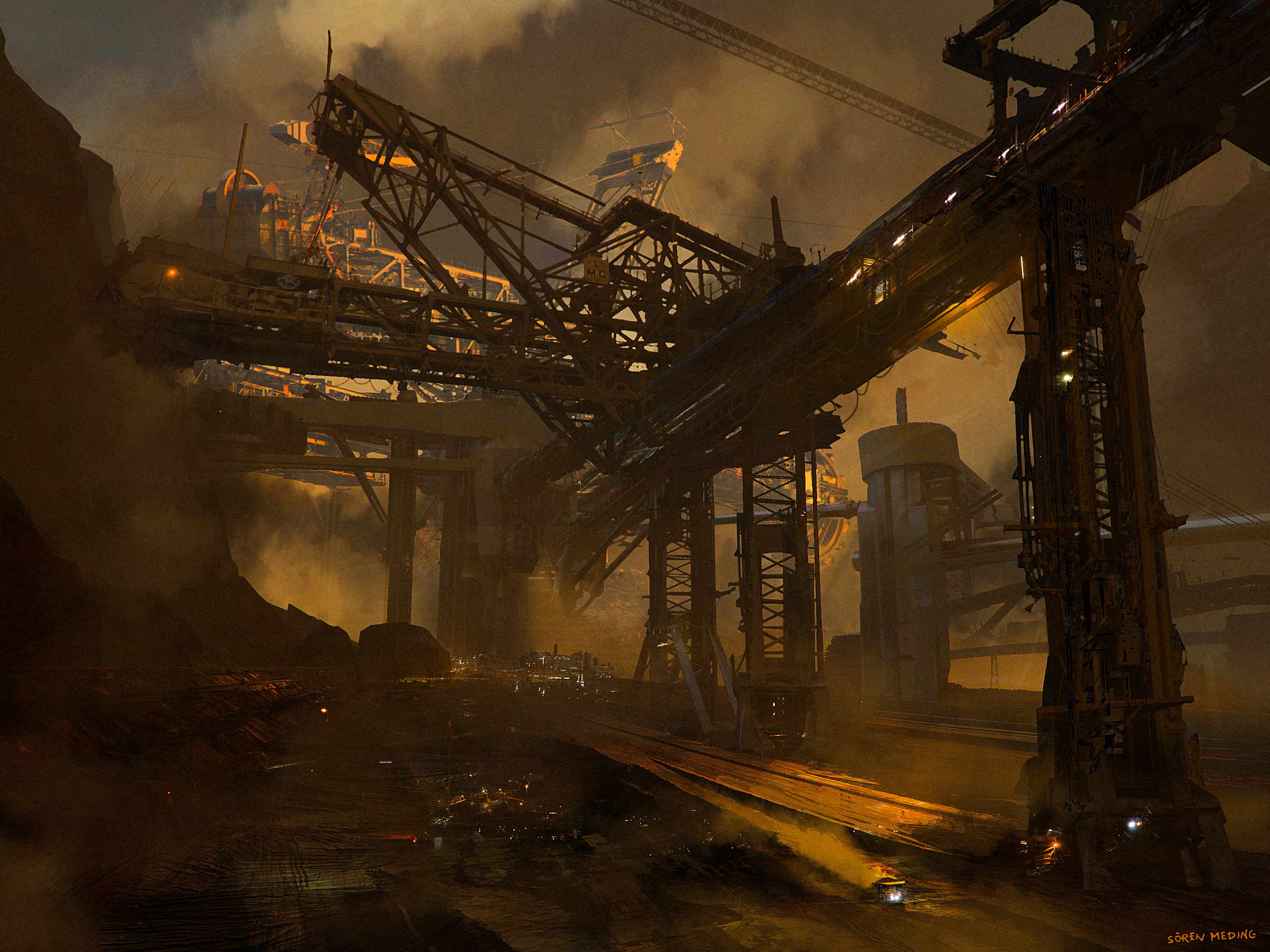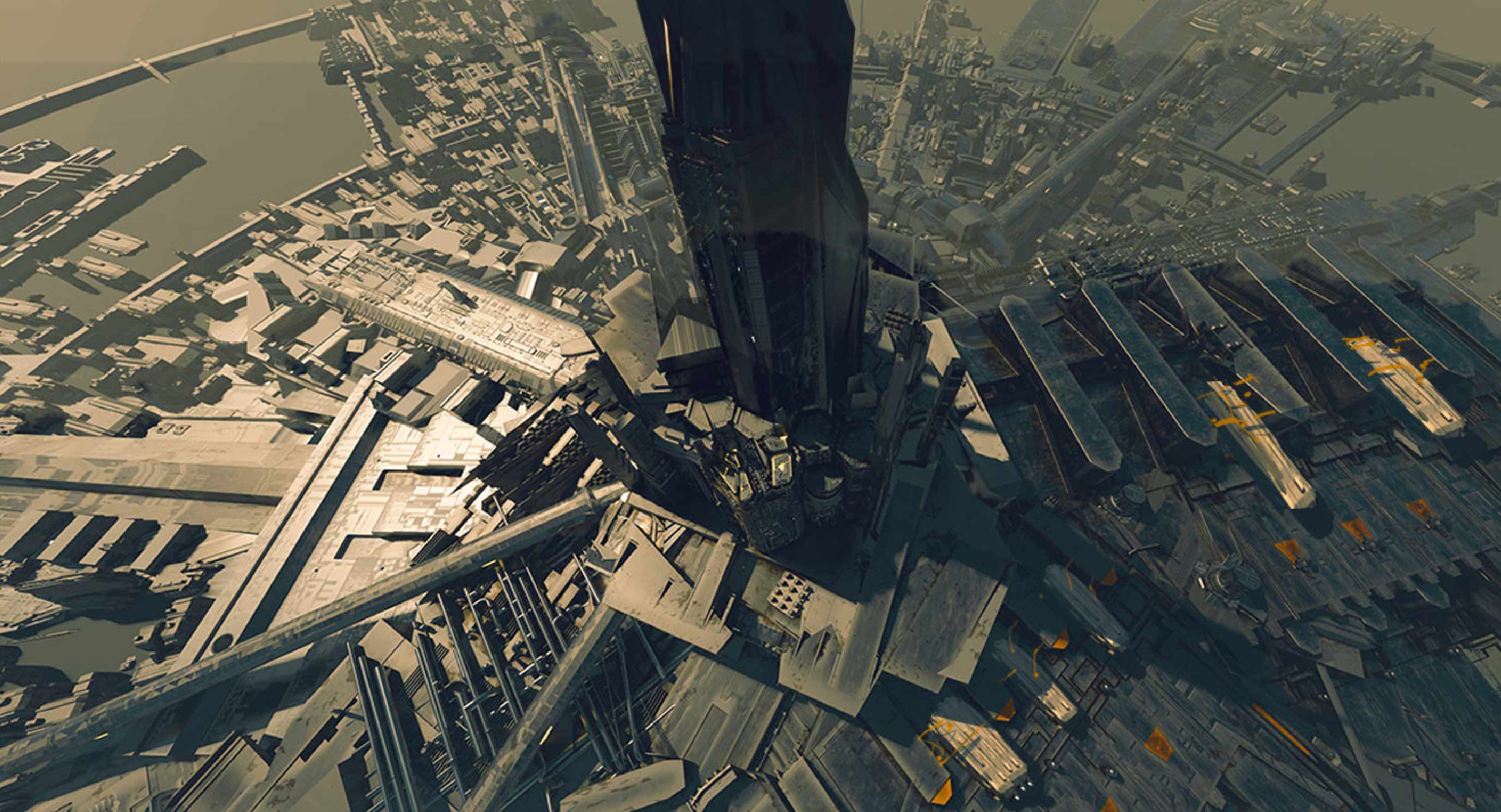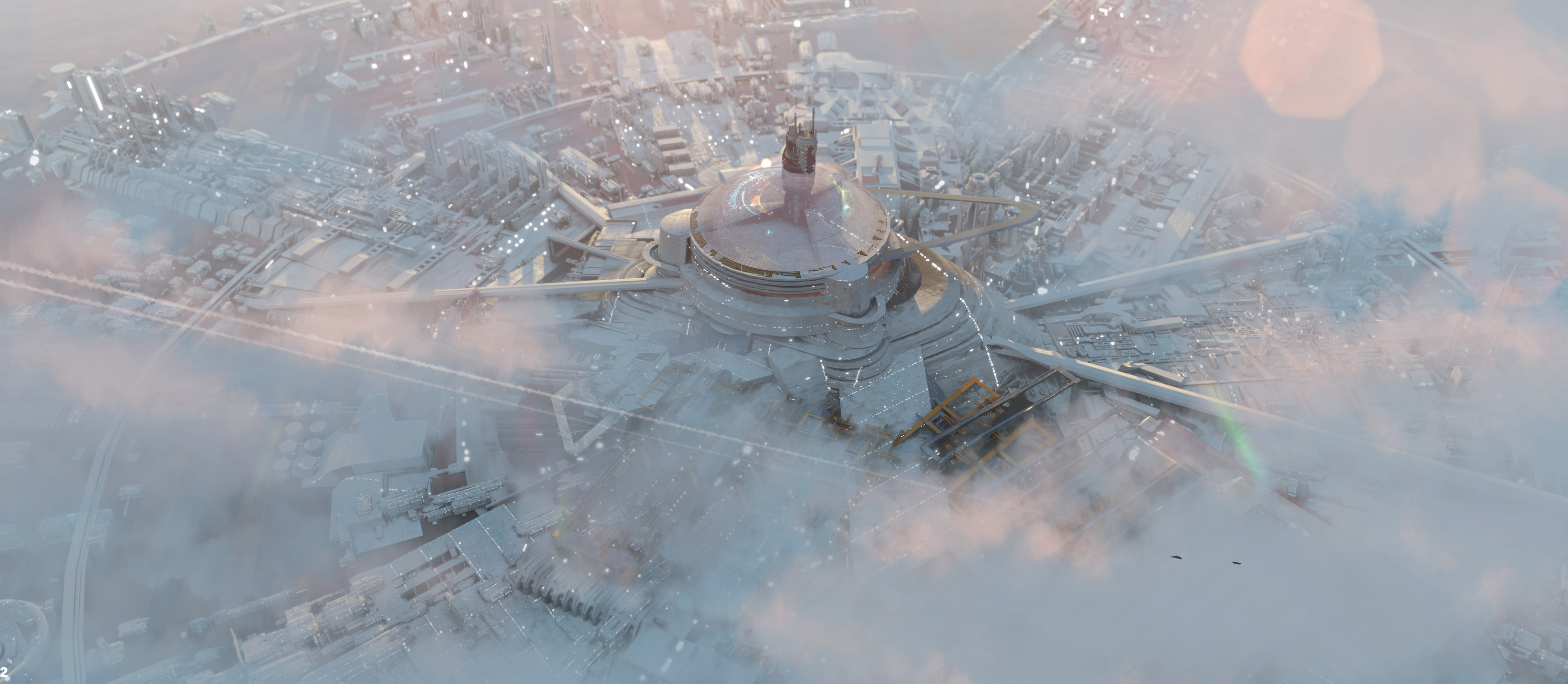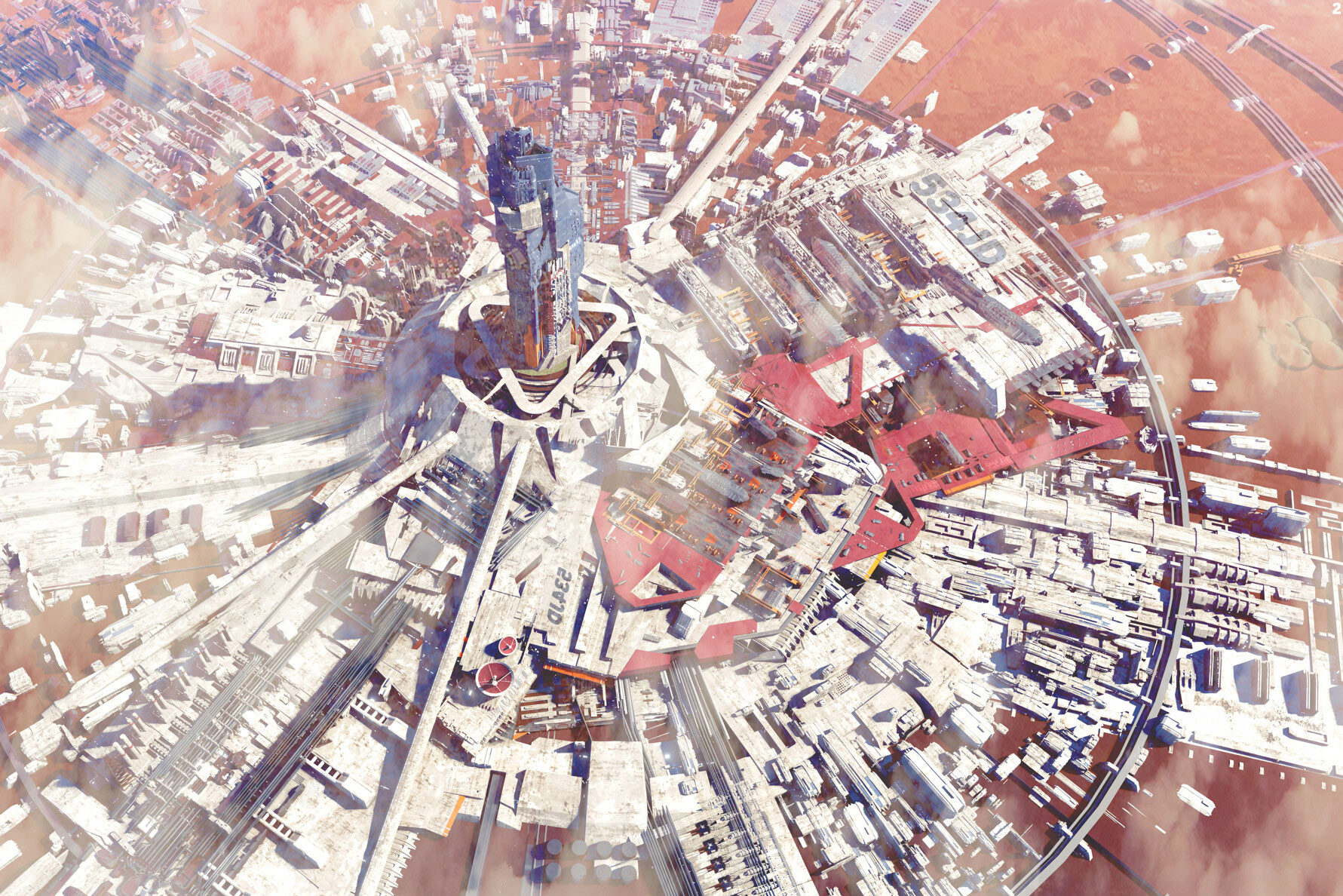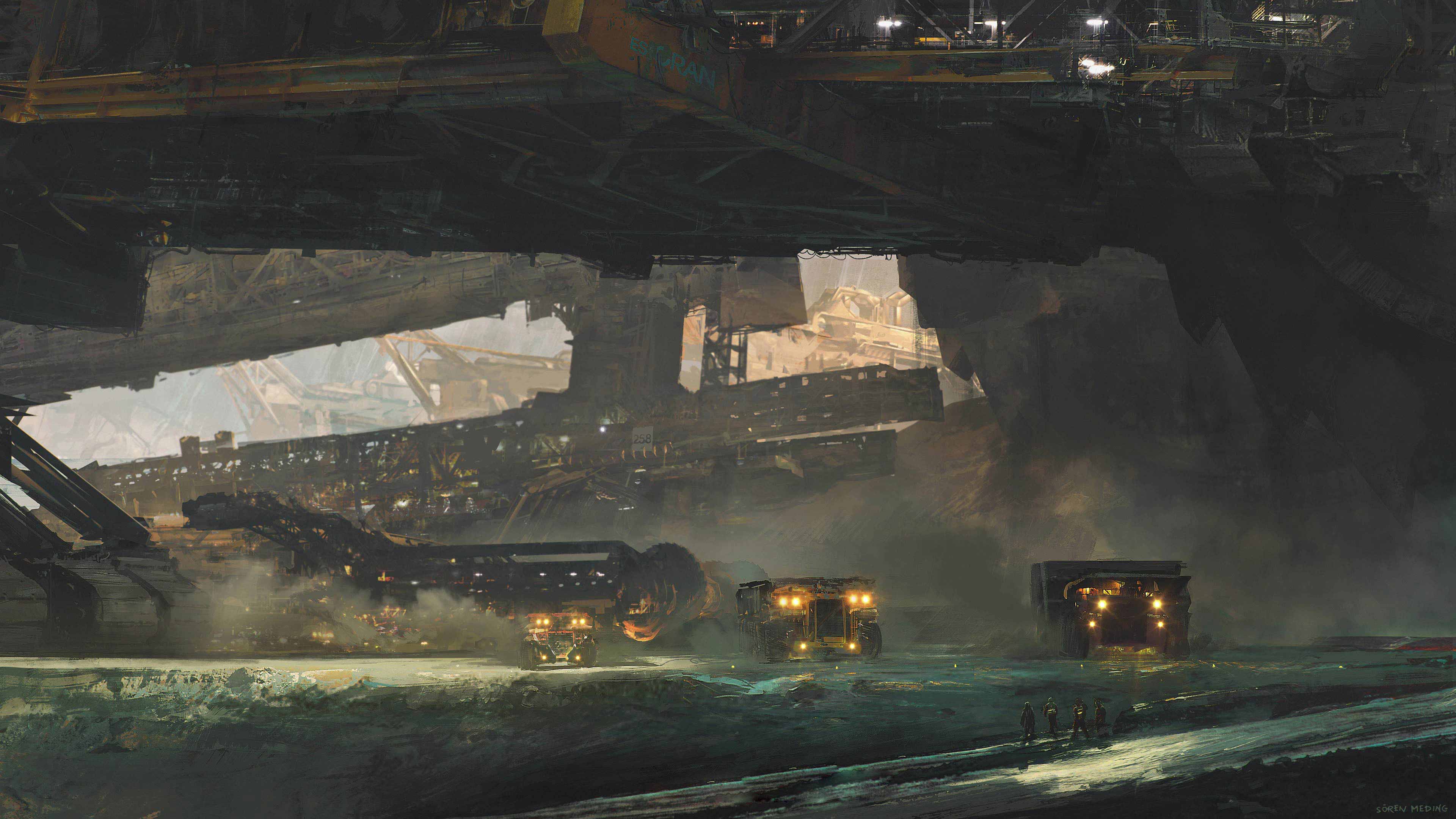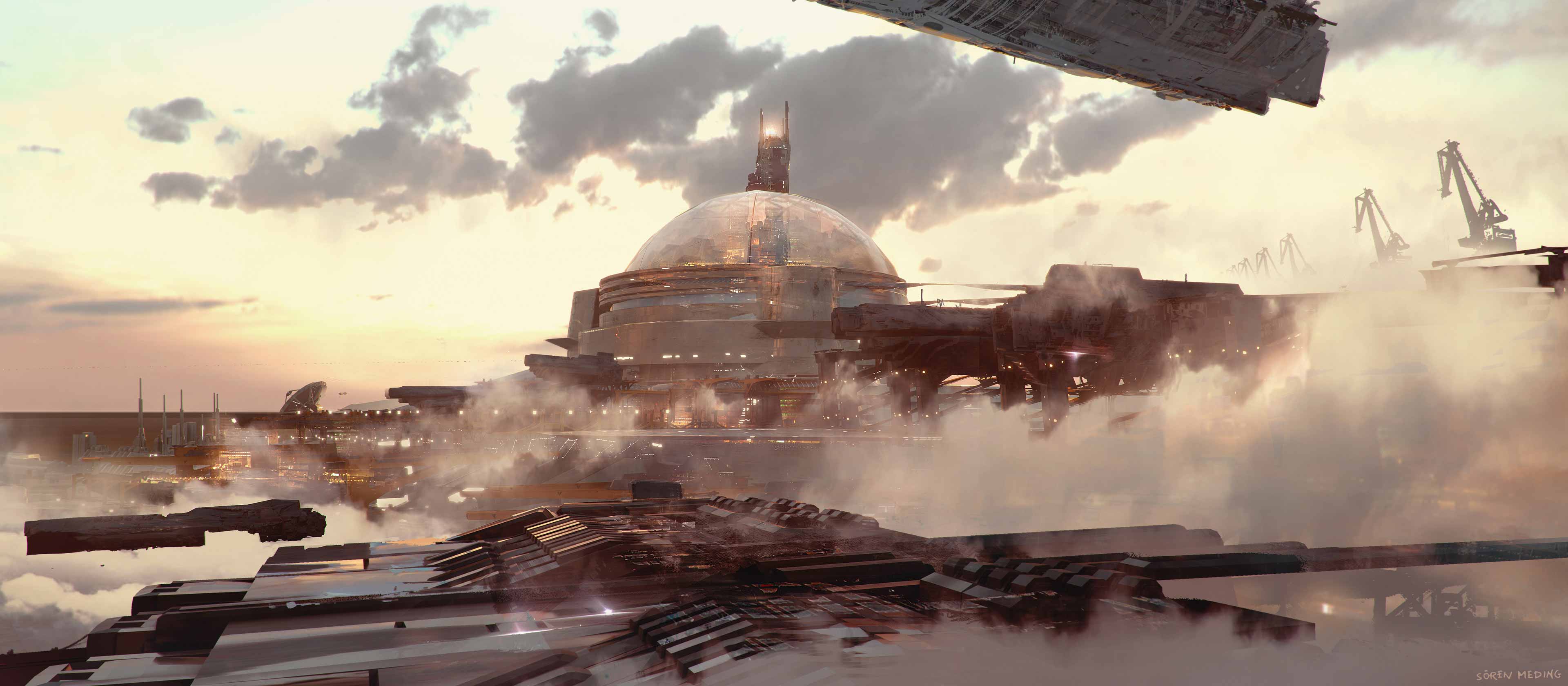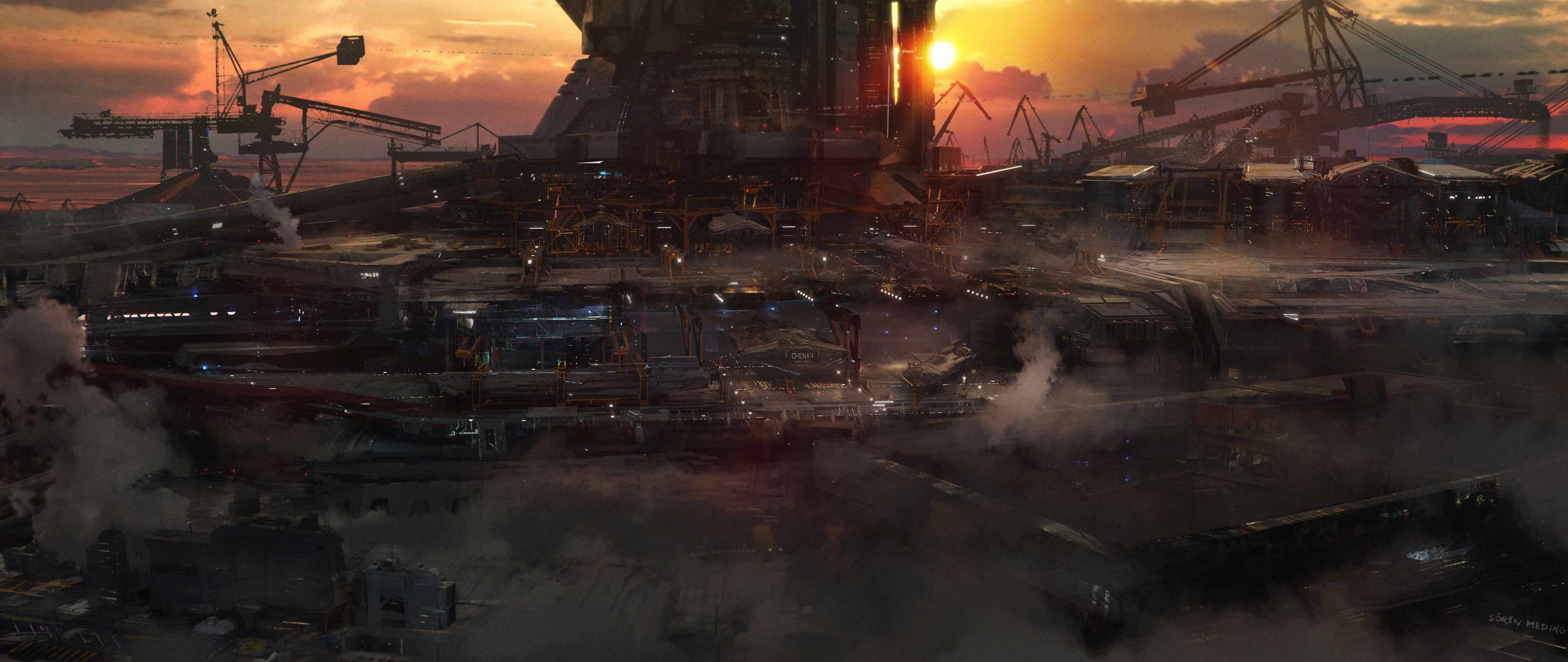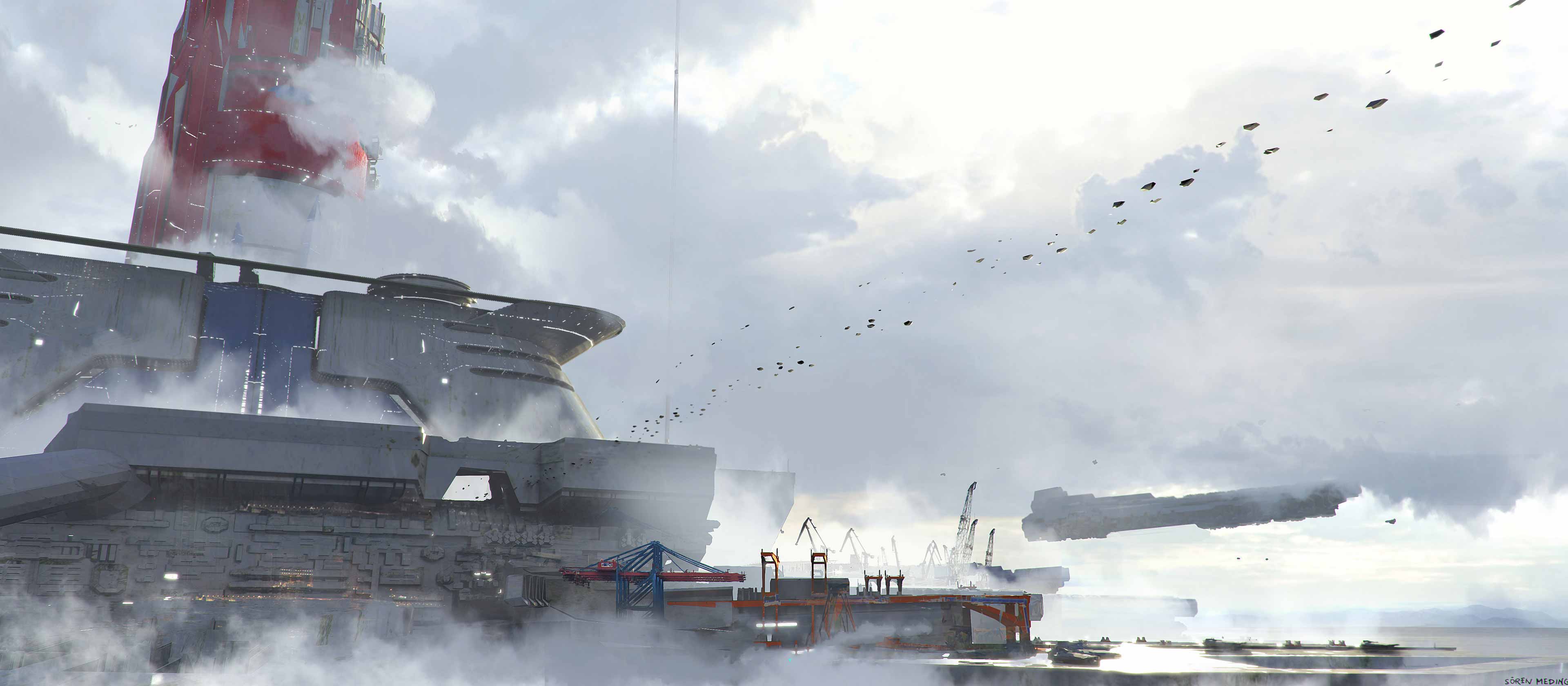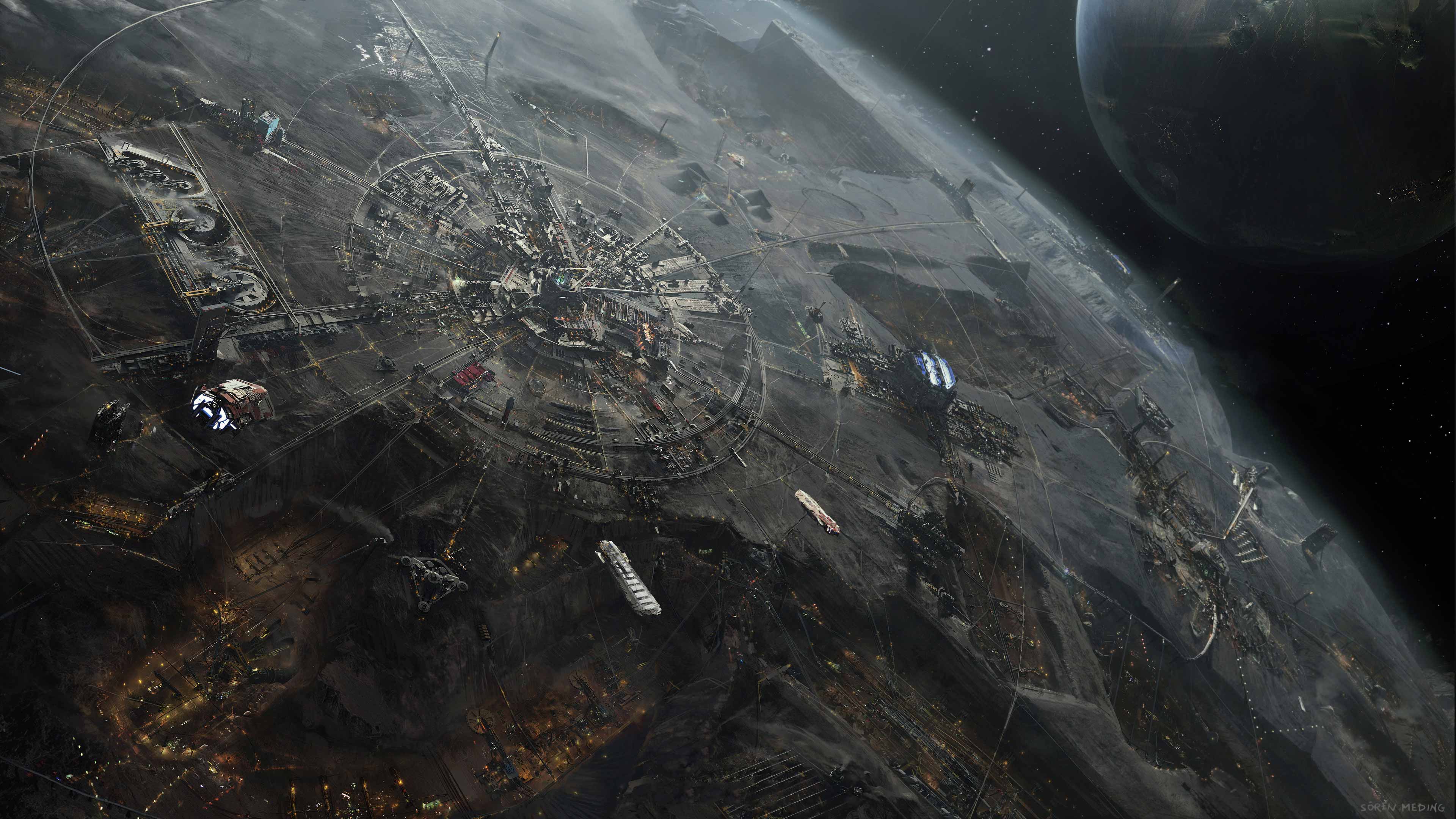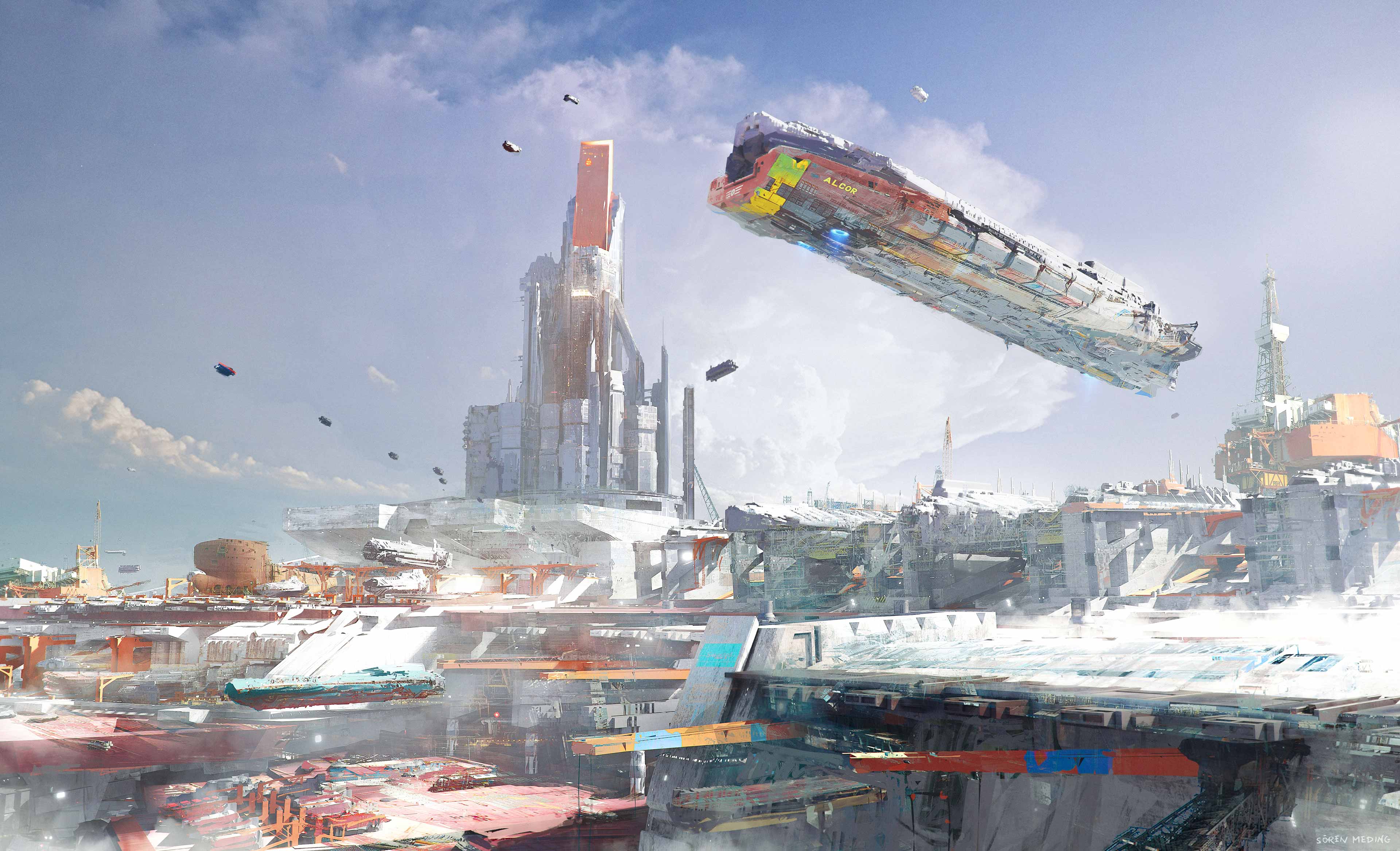
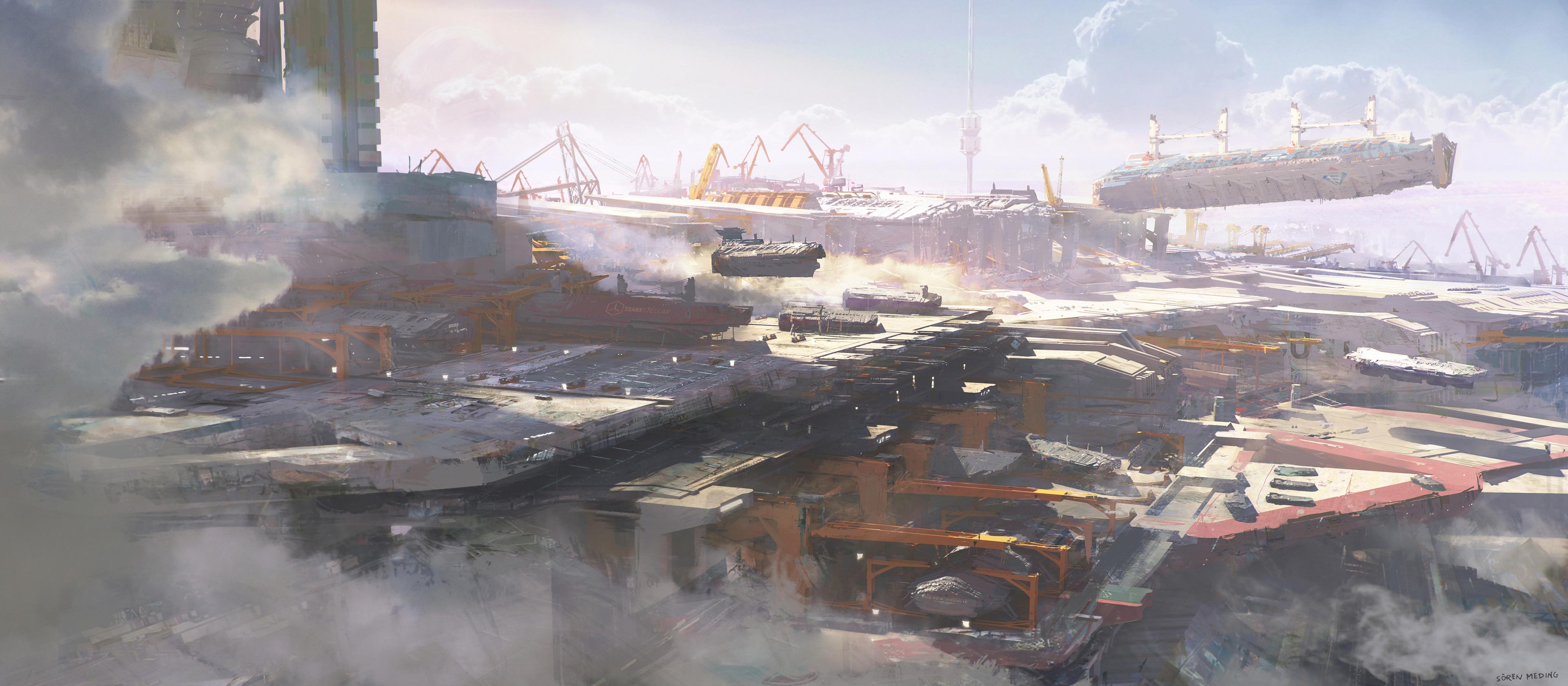
First steps
The briefing was clear: we required a system, visuals, and an overall approach for visualizing space mining as a gameplay feature, both up close and from a “planetary view.” Multiple dozens of mining stations were meant to be accommodated on a single planet. How does one approach such a task?
One of my initial steps was to explore the potential appearance of the space stations. I delved into experimentation swiftly. My aim was to avoid stylized, exaggerated stations and instead focus on realistic sizes.
How deep are the craters left by the exploitation of this planet? Should the planet be torn apart completely? Or should only the surface be mined? Or perhaps all the way to its core? Questions upon questions. Here was my thought: striking but not overly fantastical, retaining a sense of realism while still delivering a powerful impact.
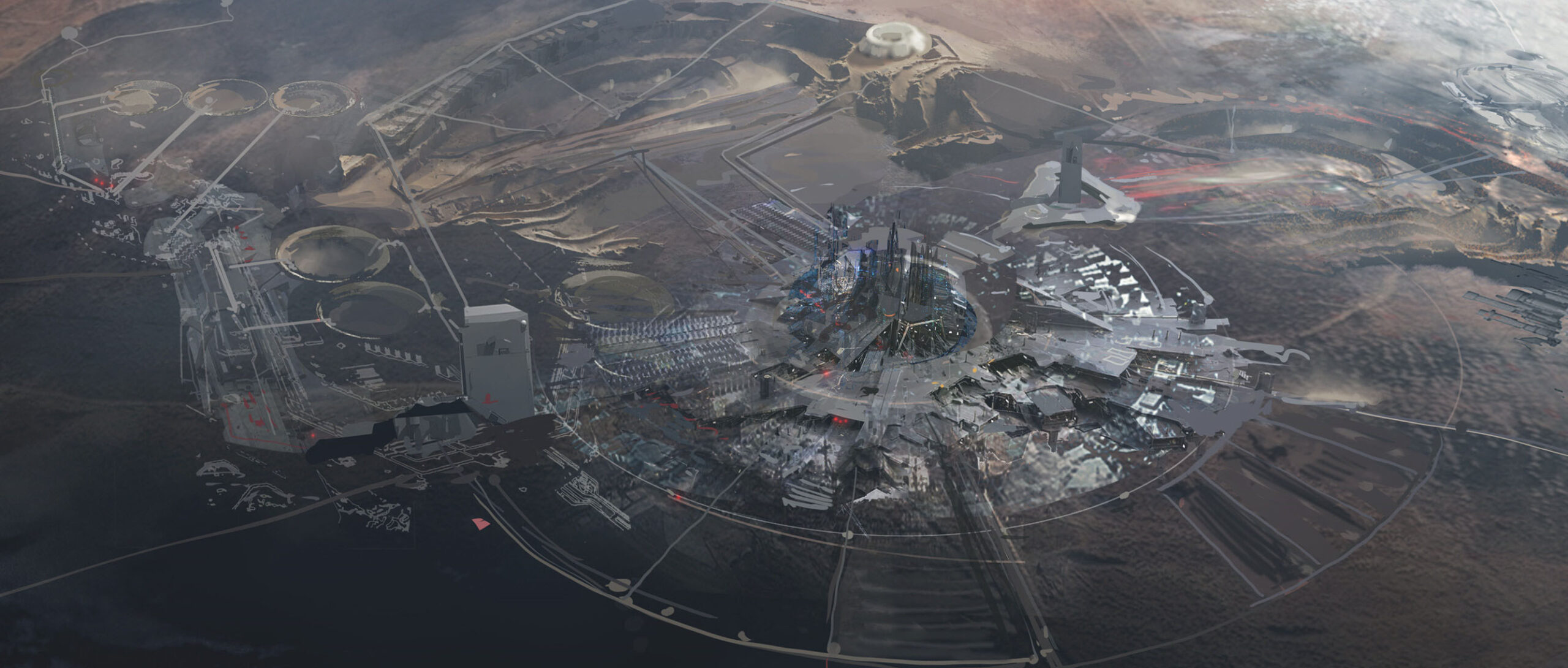
Here, you can clearly observe the “city” along with conveyor belts transporting mined material to the central space hub, accompanied by small circles indicating test boreholes or tunnel drillings.
Based on the previous concepts and learnings, the next step became possible: creating a personalized 3D kitbash set (as seen above). Furthermore, numerous ideas emerged for the central “hub.”
Aiming for the right shot to convey the story
Once the kitbash set was assembled, I introduced a simple background to quickly generate environmental concepts for communication purposes. Subsequently, I incorporated all of them onto a spherical planet. Although the scaling may have been somewhat off, it was crucial for the subsequent artworks.
The large bucket-wheel excavators are significantly larger than today’s already immense open-pit mining equipment. Nonetheless, I noticed that the fundamental function of mining equipment remains essentially unchanged; only the dimensions alter.
Several artworks have emerged depicting the central distribution hub. I reside in Hamburg, a city with a prominent harbor. All of these elements frequently intertwine.
At the base of the habitat city: A fusion of airport and logistic-container port, the spaceport features cranes and bulk cargo facilities in the background.
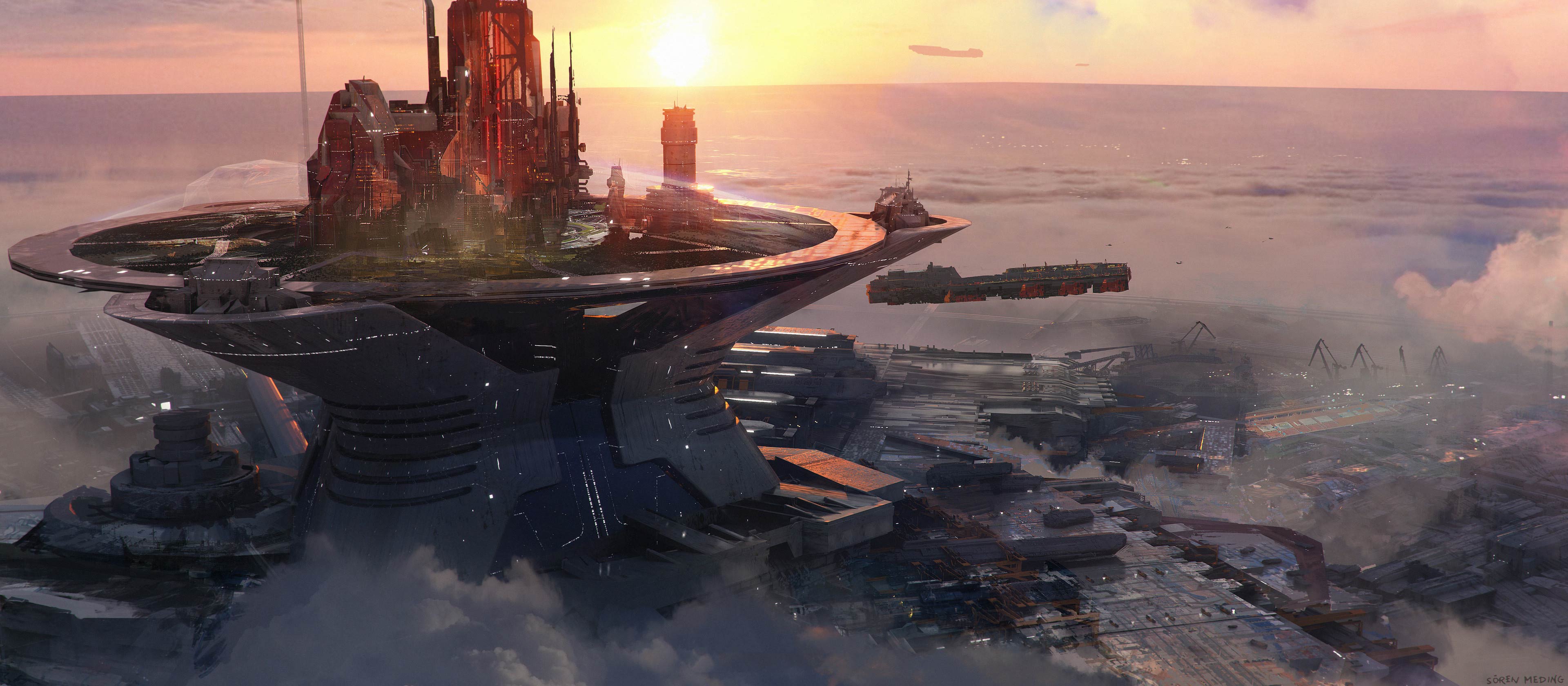
This artwork combines all the acquired knowledge into a single image.
